

USMC Systems Command Provides Details on Long-Range Missile Battery
Naval news reached out to the u.s. marine corps (usmc) systems command for more details and information on their long-range missile battery, essentially one tomahawk cruise missile in a canister mounted on an unmanned rogue-fires jltv 4x4 tactical truck..
Peter Ong 14 Aug 2023
In order to provide land-based long-range anti-ship missile (LBASM) fires that exceeds the more than 185 kilometers (115 miles; 100 nautical mile) range of the Navy Marine Expeditionary Ship Interdiction System(NMESIS) Naval Strike Missiles (NSM), also mounted on an unmanned Joint Light Tactical Vehicle (JLTV) Remotely Operated Ground Unit for Expeditionary ( ROGUE Fires) vehicle, the U.S. Marine Corps (USMC) have placed a single Tomahawk launcher on ROGUE-Fires JLTVs.
Called the Long-Range Missile (LMSL) Battery, the single Tomahawk launcher on a ROGUE- Fires JLTV should not be confused with the USMC Tomahawk trailer also called the Long-Range Fires Launcher (LRFL) towed by a Medium Tactical Vehicle Replacement tractor.
This “acronym soup” of terminology does have purpose for the U.S. Marines. Essentially, with NMESIS NSMs and LMSL Maritime Strike Tomahawks, the Corps now has two unmanned JLTV systems that can strike at enemy ships from over 115 miles with NSM to over 1,000 miles with Tomahawk. And this doesn’t include the upcoming Precision Strike Missile (PRsM) that will load into the M142 High Mobility Artillery Rocket System (HIMARS ) and can engage moving ships. Some analysts and NMESIS critics have complained that the Naval Strike Missiles are too short in range to act as an effective anti-ship deterrent, but with Tomahawks, the anti-ship deterrent range is increased almost ten-fold.
A Press Release announced the creation of the first ROGUE-Fires Long Range Missile Battery for the U.S. Marines to align with their Force Design 2030 focus started by the recently retired USMC Commandant David Berger. “In a historic event at Marine Corps Base Camp Pendleton, California, the 11th Marine Regiment, 1st Marine Division activated the Marine Corps’ first long-range missile battery during a ceremony July 21.

“The new battery, which falls directly under 11th Marines, is designed to enhance the division’s and the joint force’s long-range strike and eventually sea denial capability and lethality,” said the Marine Corps Press Release. “The long-range fires platform, NMESIS, and other fire support assets are only part of 1st MARDIV’s commitment to sea denial.”
Naval News reached out to the U.S. Marine Corps in July 2023 to inquire on more details and information on the Long-Range Missile (LMSL) Battery. Morgan Blackstock, Public Affairs Specialist at the Marine Corps Systems Command (MCSC), Office of Public Affairs & Communication, replied via email.
Naval News: Please explain and describe the logic and purpose of the unmanned USMC Long-Range Missile (LMSL) Battery (Tomahawk on a ROGUE-Fires JLTV).
MCSC: The carrier platform uses automotive components that are common with the JLTV to reduce cost and improve logistics, but it is not a JLTV variant. The carrier is designated the Remotely Operated Ground Unit for Expeditionary Fires (ROGUE-Fires) and was developed under the Navy Marine Corps Ship Interdiction System (NMESIS) program. The Marine Corps is pursuing this configuration for a more deployable and mobile Tomahawk platform.
Naval News: Is the JLTV Long Range Fires a Mark 41 VLS canister? If not a Mark 41, what is the VLS designation, or is it a shorter VLS tube?
MCSC: The Marine Corps is using one strike length cell of a Mk 41 launcher along with the launch electronics.
Naval News: What are the side boxes on the unmanned Long-Range Missile (LMSL) JLTV and what do they contain?
MCSC: The side boxes shown on the launcher are the fire control and electronic systems needed to program and launch the missile.
Naval News: Can you please explain what the JLTV with VLS canister is transportable in or slung under?
MCSC: The launcher is designed to be transportable on C-130 or larger aircraft as well as amphibious ships and connectors. The reload and resupply system utilizes LVSRs [Logistic Vehicle System Replacement] which are transportable by C-17 and larger aircraft.
Naval News: Public comments state that the Maritime Strike Tomahawk and Tomahawk cruise missiles aren’t survivable against enemy ships with CIWS and air missile defense systems. Can you please explain why the USMC chose to go forth with this development?
MCSC: Any questions concerning the Maritime Strike Tomahawk should be referred to the Navy program office.
Naval News: Public comments state that the Tomahawk is expensive to fire, that the USMC doesn’t have enough of them, and that the USMC will have a hard time reloading Tomahawk. Can you please comment?
MCSC: As recently reported, the USMC has designated the first LMSL battery and the program office is continuing to develop and field additional batteries. Regarding the ‘hard time reloading’ the Marine Corps has developed and tested a reload system that meets our operational requirements.
Naval News: Will the USMC Long-Range Missile (LMSL) JLTV fire anything else besides Tomahawk such as SM-6, ESSM, ASROC, or SM-3?
MCSC: LMSL batteries are only being equipped with Tomahawk missiles.
Naval News: Any plans to mount Tomahawk on the unmanned FMTV AML 6×6 chassis and if so, can two Tomahawks fit on the FMTV chassis?
MCSC: The Marine Corps does not have plans to integrate on the FMTV AML 6×6.
Naval News: Any unit cost per ROGUE-Fires Long-Range Missile (LMSL) JLTV launcher?
MCSC: We have not publicly released this information at this time.
Naval News: What other vehicles does the Long-Range Missile Battery contain and how many?
MCSC: LMSL batteries contain an array of vehicles (MTVRs, HMMWVS, JLTVs, etc.) similar to other Marine Corps artillery batteries for unit support including logistics and security. They are also equipped with LVSRs to handle transport and reload of Tomahawk missiles.
Related Articles
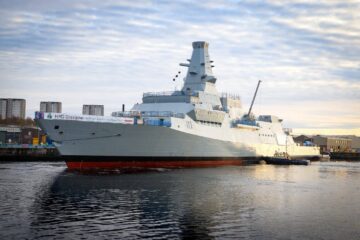
UK Announces Plans to Fit Strike Capability to Future Frigates
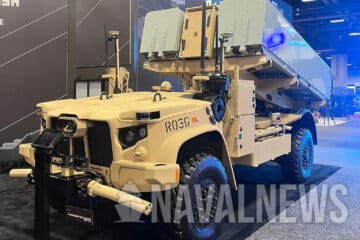
Oshkosh Awarded $40M ROGUE-Fires Order
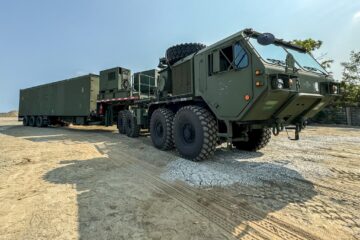
U.S. Army Deploys New Missile Launcher to the Philippines
- Air Warfare
- Land Warfare
- Naval Warfare
- Networks / Cyber
- Multi-Domain
- Indo-Pacific
- All Domain: Connecting the Joint Force
- Defense Budget Coverage
- Advanced Weapons Technology
- Air Dominance
- Newsletters
- Newsletter Signup
- Resource Library

MDA task force to examine new threats, like hybrid air-missile tactics: Chief

AUKUS partners demonstrated ‘real-time’ AI tests at US Army’s Project Convergence

With Middle East on edge, experts say Iran has plenty of reasons to delay strike against Israel

Pay the PIPIR: DoD launching new Indo-Pacific partnership for buying, sustaining weapons

Turkey unveils concept for Iron Dome competitor, Steel Dome

Hypori secures $4.1M contract for Department of the Air Force’s virtual mobile software
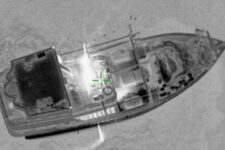
5th Fleet chief: Houthis support ‘diversifying’ beyond Iran, US Navy playing ‘shock absorber’

Anduril unveils new ‘Arsenal’ factory in bid to scale up weapons production

NORTHCOM head wants new integration role in counter-UAS ops

Pentagon No. 2 Hicks defends her Replicator drone initiative after Hill scrutiny

The ‘Bill Belichick’ of Pentagon contracts is negotiating a deal on AMRAAM missiles

Army plans to complete new air and missile defense strategy by October ‘25

As sonic booms rock Beirut, Hezbollah chief vows a ‘strong and effective’ retaliation
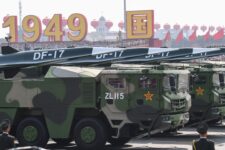
Into the unknown: Managing conventional and nuclear uncertainty in the Indo-Pacific

Air Mobility Command tries AI to speed up airlift planning
Defense industry news, analysis and commentary.
- Special Features
Breaking Defense In your inbox
Want the latest defense industry news? Sign up for the Breaking Defense newsletter.
- Air Warfare , Land Warfare
Army Picks Tomahawk & SM-6 For Mid-Range Missiles
Lockheed martin won a $339 million contract today to integrate two raytheon-made missiles, now used by the navy, into a truck-mounted artillery battery by 2023..
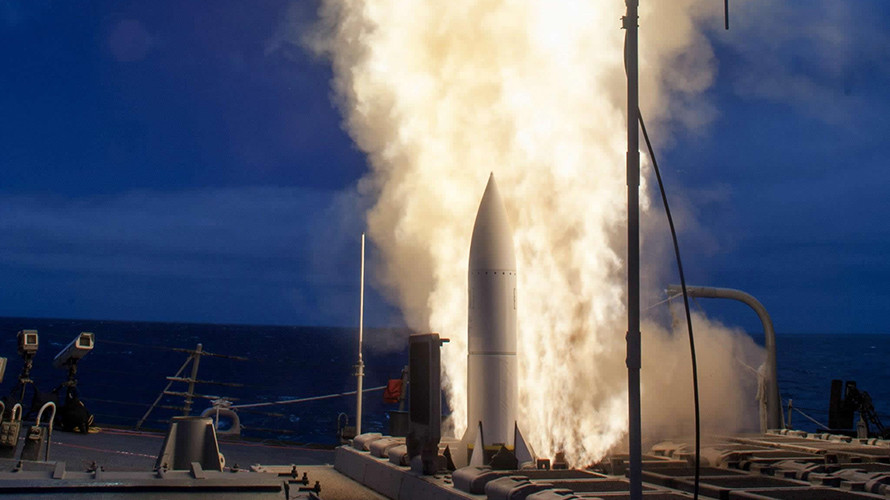
SM-6 missile launch
WASHINGTON: Instead of picking a single missile to be its thousand-mile Mid-Range Capability, the Army has chosen to mix two very different Navy weapons together in its prototype MRC unit: the new, supersonic, high-altitude SM-6 and the venerable, subsonic, low-flying Tomahawk.
“Following a broad review of joint service technologies potentially applicable to MRC, the Army has selected variants of the Navy SM-6 and Tomahawk missiles to be part of the initial prototype,” says a Rapid Capabilities & Critical Technologies Office (RCCTO) statement released this afternoon. “The Army will leverage Navy contract vehicles for missile procurement in support of the Army integration OT [Other Transaction Authority] agreement.”
Lockheed Martin won the OTA contract, worth up to $339.4 million with all options, to integrate the two missiles – both built by Raytheon – into the Army fire control systems, vehicles, and support equipment required for a fully functioning artillery battery. Lockheed builds the current wheeled HIMARS and tracked MLRS launchers, which can handle a wide variety of current and future Army weapons, but neither the service nor the company would say whether they could fire either SM-6 or Tomahawk, citing security concerns.
They are set to enter service in 2023.
I asked the Army if it would modify either weapon to better its needs: The answer is no. “The Army will not modify the Navy missiles,” an official said in an email to Breaking Defense . That means the Army’s going to buy exactly what the Navy is getting.
However, the announcement’s mention of “variants” gives the Army leeway to buy the latest and most upgraded models. That’s important for both weapons.
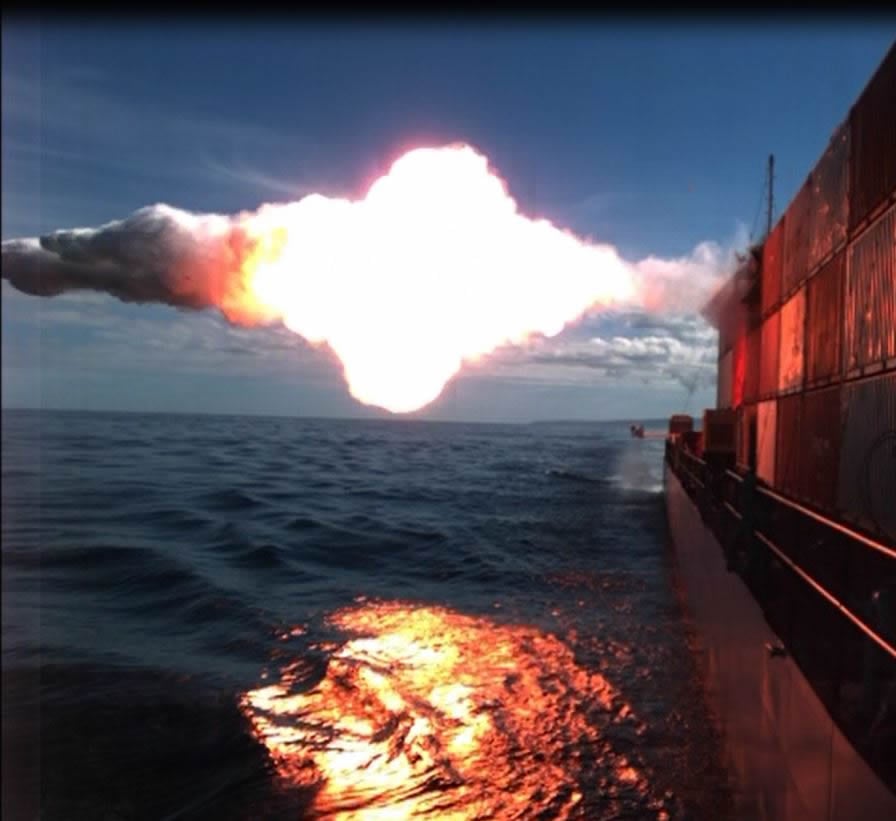
Testing the Maritime Strike Tomahawk, a variant of the venerable TLAM
A Mix of Missile Options
The subsonic Tomahawk cruise missile is the long-serving mainstay of long-range strike. It was first fielded in the Reagan era and has been much upgraded since, with more than 2,000 fired in combat since 1991. There used to be a whole family of different versions, but nuclear-tipped, land-based, air-launched, and anti-ship variants were retired after the Cold War. That left the Navy’s conventional-warhead Tomahawk Land Attack Missile (TLAM), which can only be fired from ships and submarines, and only at stationary targets ashore.
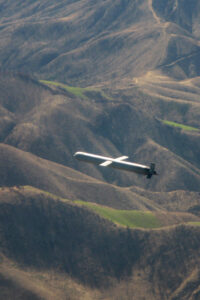
Tomahawk Block IV cruise missile
But in recent years, anxiety over the growing Chinese fleet led the Pentagon to build a new anti-ship model, the Maritime Strike Tomahawk (MSM). The Army and Marine Corps are both intensely interested in turning Pacific islands into forward outposts bristling with ship-killer missiles, so they’re likely to buy the Maritime Strike model.
The supersonic SM-6 is the latest and sexiest version of the Navy’s Standard Missile family, whose primary role is defensive, built to shoot incoming enemy aircraft and missiles out of the sky. But the new SM-6 is also capable of striking surface targets on land and sea.
The SM-6 selection surprised me at first, because its reported ranges are well short of the 1,000 miles the Army wants for the Mid-Range Capability. While the real range is classified, estimates range up to 290 miles (250 nautical miles).
However, the Navy is now developing an extended-range model of the SM-6, the Block 1B. (It’ll use the rocket booster from another Standard Missile variant, the ICBM-killing SM-3 , which is known to have a range greater than 1,000 miles). What’s more, while the current SM-6 maxes out at Mach 3.5, the SM-6 Block 1B will reportedly reach hypersonic speeds, i.e. above Mach 5. While the Navy plans for Block 1B to complete development only in 2024 , it wouldn’t be a stretch to have a handful of missiles available early for the Army’s MRC roll-out in late 2023.
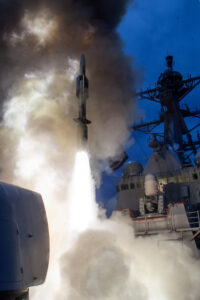
The USS John Paul Jones test-fires an SM-6 missile from a Vertical Launch System (VLS)
Why mix both SM-6 and Tomahawk in the same unit? Part of the answer is probably cost. Tomahawk is relatively affordable at about $1.4 million each, or perhaps $2.5 million for the anti-ship variant. The current model of SM-6 is nearly $5 million , and the hypersonic, extended-range SM-6 1B will no doubt cost more. That allows the Army to buy more Tomahawks than SM-6s and reserve the faster, more expensive missiles for harder or higher-priority targets.
The other benefit is tactical. The Tomahawks come in relatively low and slow, trying to get under radar, while the SM-6s fly high and fast. A missile defense that stops one may not stop the other, complicating the enemy’s countermeasures.
Both missiles are available in the near term, a crucial consideration given the Army’s urgency to field the Mid-Range Capability by the end of 2023. In the longer run, however, the Army may well develop a new weapon for the MRC role, perhaps derived from DARPA’s hypersonic OpFires experiment .
Why should the Army be launching long-range missiles at all?
That’s not something it’s done since the Pershing was retired, and some critics consider it redundant to the existing Navy and Air Force arsenals. But the Army is eager to prove its relevance to future wars against high-tech adversaries, especially in the vast Pacific , and it argues that truck-launched missiles are cheaper to deploy and easier to hide than weapons mounted on ships and planes.
The Army’s official press release and its full responses to my questions follow.
Army Awards Mid-Range Capability (MRC) Other Transaction (OT) Agreement_Final by BreakingDefense on Scribd
“The Army and joint service partners have conducted extensive mission thread analysis to solidify the kill chain and communications systems required to support MRC operations. Details are not publicly releasable due to OPSEC considerations ,” Army officials wrote me in an email.
“The Tomahawk and SM-6 were chosen in order to accelerate a mature capability to address near-peer threats. They provide the required mix of capability to engage desired targets at mid-range distances. Working closely with the Navy, the Army will be able to integrate these missiles for the MRC prototype battery to meet the FY23 fielding date.
“The Army will not modify the Navy missiles. While working on materiel solutions, the Army is also consistently doing analysis to determine the best mix of weapons systems, how the enemy is going to fight against new capabilities, and how to address capability gaps.
“The MRC prototype battery is planned to include a mix of both SM-6 and Tomahawk missiles to provide the desired capability in FY23.”

Seconds save lives, UX can be the differentiator
Reducing system complexity through user experience design saves time, training and lives.

“Missions are ramming into each other, overlapping each other. The integration challenge is large,” Lt. Gen. Heath Collins said. “[S]ilos exist between services, between entities within the services, between MDA.”
By Theresa Hitchens
Latest from Breaking Defense
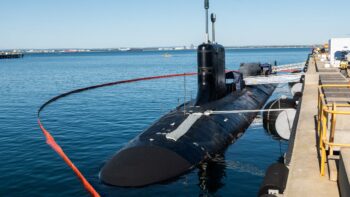
New dry dock for Aussie subs an ‘ongoing’ discussion: Defense Minister Marles
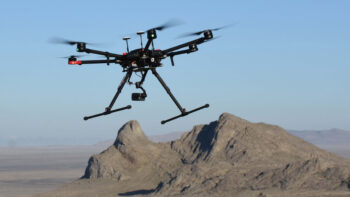
Some Replicator tranche 2 systems have already been selected, DIU head says
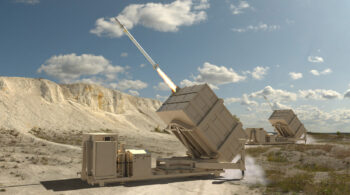
Industry lining up to produce new supersonic cruise missile interceptor under Army IFPC program

Earth’s a big world with secrets to reveal to those who can sense and make sense of it
With Planet’s AI/ML tools and 50 petabytes of Earth-observation data, users can easily search through the archive to find the needles in the haystack.

Punching through clogged networks to reach soldiers: Time Sensitive Networking
New platforms such as OMFV and FLRAA will depend on Time Sensitive Networking to get data through.
Sign up and get Breaking Defense news in your inbox.
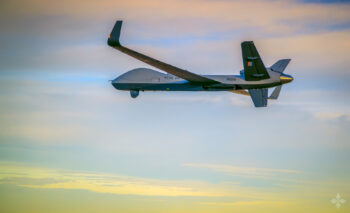
Today’s bold remotely piloted aircraft technologies are shaping an even bolder vision for the future
Advances in RPA technologies signal a future where aircraft could operate from a variety of austere locations, making it much more difficult to find and target large air bases.
- Advertising & Marketing Solutions
- Breaking Defense
- Breaking Energy
- Breaking Gov
- Above the Law
- Dealbreaker
- MedCity News
Copyright © 2024 Breaking Media, Inc. All rights reserved. Registration or use of this site constitutes acceptance of our Terms of Service and Privacy Policy .
Privacy Center | Do not sell my information
Friend's Email Address
Your Email Address
Everything To Know About Tomahawk Missiles: Speed, Cost, And Destructive Power
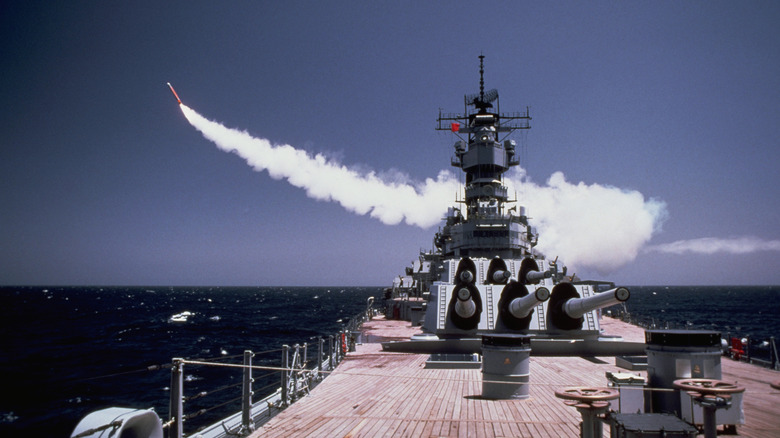
Tomahawk missiles have been world famous since the first Gulf War in 1991 when the United States used the missile against Saddam Hussein's forces in Iraq and Kuwait. Since then, the missile system has been used in nearly every conflict the United States has been involved in, including recent strikes against Houthi rebels in Yemen. Given the weapon's ubiquity, it's worth exploring what exactly a Tomahawk missile is. The United States Navy reports that over 2,300 Tomahawks have been deployed in combat, with that number increasing by the day.
According to the Missile Defense Project from the Center for Strategic and International Studies, the Tomahawk (full name Tomahawk Land Attack Missile) has been in service since 1983 and were first developed for the United States Navy starting in 1972. It was designed to be launched from ships or submarines and was, from the outset, made with nuclear payloads in mind. However, nuclear-armed Tomahawks have not been used in combat and are currently deactivated.
Slow and steady
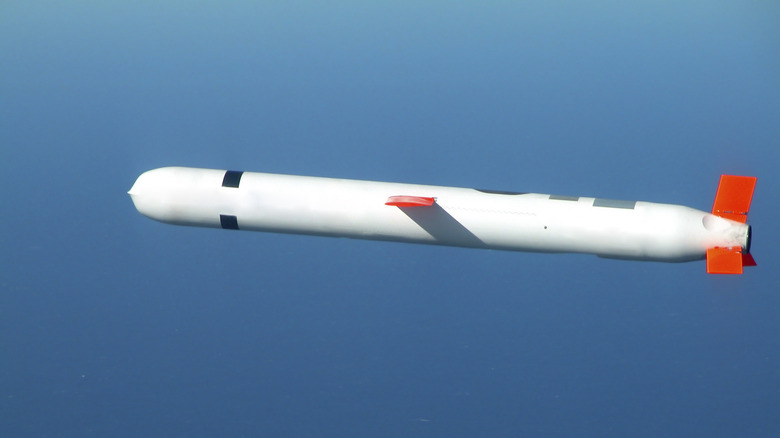
The Tomahawk missile itself is a 20.3 foot long craft with a wingspan of eight and a half feet, and it weighs 3,330 pounds with all of its components. It's powered by both a rocket booster and turbofan jet engine made by Williams International. According to PBS, the rocket booster engine launches the Tomahawk in the air (hence all the smoke you may see in news broadcasts or photos you see of the missile) and then its jet engine takes the missile the rest of the way to its target.
Despite being powered by rockets and a jet engine, the Tomahawk missile itself isn't that fast, at least comparatively. It reportedly travels at a speed of around 550 miles per hour. An F-16 fighter jet tops out at 1,500 miles per hour and the much larger Minuteman III ballistic missile can reach speeds of up to 15,000 miles per hour. Supposedly, the Tomahawk's relatively low speed helps it avoid radar systems more efficiently. Additionally, it flies at an altitude of between 100 and 300 feet, much lower than conventional fighter aircraft.
Range and power
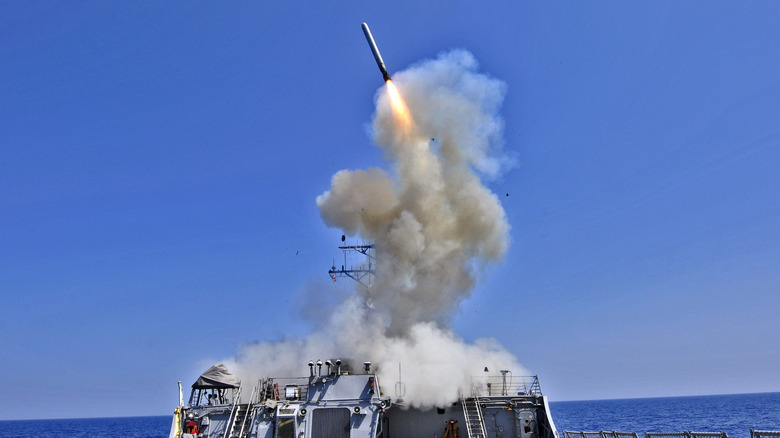
The actual payload of the Tomahawk can consist of a number of different munitions. But the primary warhead of the Tomahawk is a 1,000-pound high explosive charge. It can also carry cluster munitions consisting of small bomblets, similar to the ATACMS currently used in Ukraine . For explosive force, Tomahawks were more than enough to disable runways or sink ships.
The exact guidance system and navigational dynamics of the Tomahawk missile are classified. However, it is known that it can use GPS or inertial guidance systems to hit the target. Additionally, the U.S. Navy states that up to 15 targets can be pre-programmed for missile salvos. The Tomahawk is capable of "loitering," meaning that, provided the missile has enough fuel, it can fly around in circles to relay information or wait for the right target. It has a range of around 1,500 miles, meaning that the ship or submarine launching the missile is well out of harm's way. It is accurate to within 10 meters.
The Tomahawk's combat history
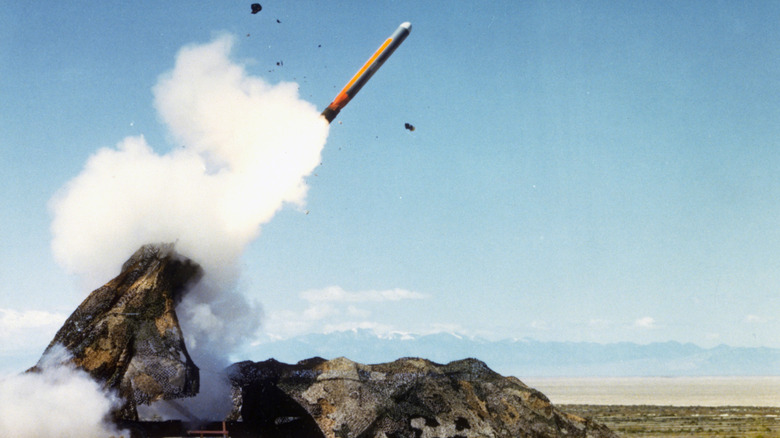
The Tomahawk is primarily made by Raytheon Missile Systems. According to budget data from the United States Marine Corps from 2022, each Tomahawk costs around $2 million. As of now, the United States and the United Kingdom are the only countries to deploy Tomahawk missiles, although Australia and Japan have put out bids to purchase Tomahawks.
The U.S. Navy states that 140 total craft are capable of launching Tomahawks. That number consists of Ohio-class submarines, Arleigh Burke-class destroyers, and more. The United States Army has also tested launching Tomahawks from ground-based platforms. The USS Missouri, a World War II-era battleship and the very last of its kind, was fitted to fire Tomahawks during the opening salvos of the First Gulf War. It fired a total of 28 cruise missiles, in addition to its 16-inch deck guns.
The submarines USS Louisville and USS Pittsburgh launched Tomahawks in 1991 at targets in Iraq and became the first submarines to fire Tomahawks while submerged.
Several decades of service
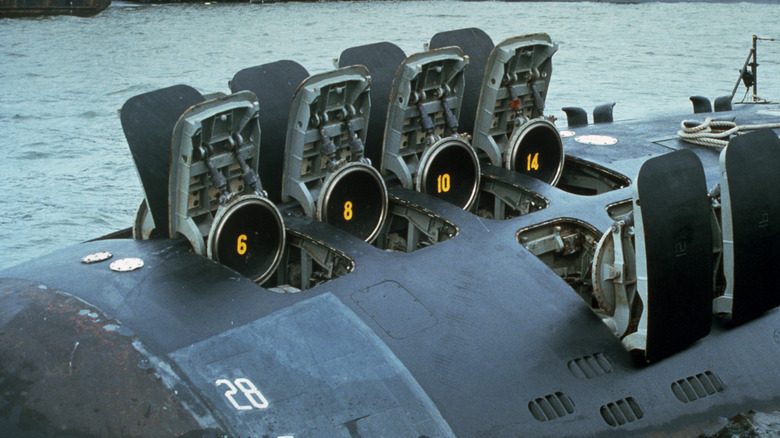
Outside of the Gulf War, Tomahawks were used to attack Iraq several more times in the 1990s, against Bosnian targets in 1995, during NATO actions against Yugoslavia, and during the engagements against Afghanistan after 9/11. More recently, Tomahawks saw use in Libya as part of Operation Odyssey Dawn, ISIS in Syria experienced the effects of Tomahawks, and Syrian chemical weapons facilities used by despot Bashar Al-Assad were struck by Tomahawks in 2017. In 2024, both American and British forces launched Tomahawks against Houthi rebels after the rebel group attacked shipping lanes and US-flagged vessels in the Red Sea.
Raytheon reports that the Tomahawk missile could stay in service until at least 2035. By that time, the cruise missile will have eclipsed 50 years of service. With its long range, ability to be launched practically anywhere in the world from above or below the waves, and its accuracy, the Tomahawk has proved literally thousands of times that it is a vital part of the arsenals of the U.S. Navy and the Royal Navy.
Recommended
International
- U.S. Elections
- Left Opinions
- Mon David Pakman
- Tue Ruben Navarrette
- Wed Adrienne Lawrence
- Thu Jordan Reid
- Fri Dr. Rashad Richey
- Right Opinions
- Mon Larry Lindsey
- Tue Ben Weingarten
- Wed Newt Gingrich
Timothy Carney
John Fortier
Matthew Continetti
Robert Doar
- Fri Star Parker
Peter Zeihan
Dr. frank luntz.
- Weapons and Warfare™
- America Speaks with Dr. Frank Luntz
- Editorial Mission
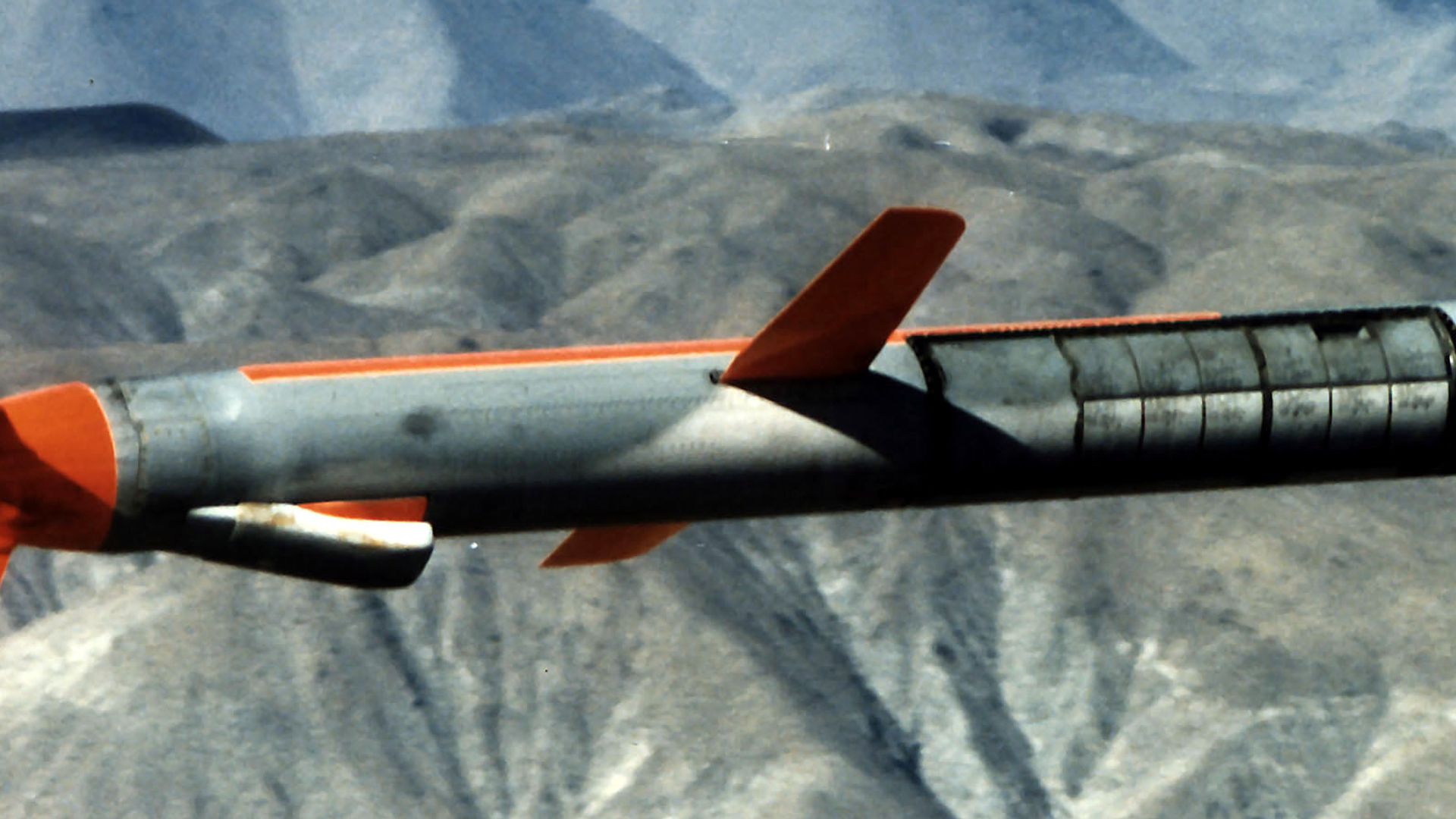
Geopolitical Strategist
Our commentary partners will help you reach your own conclusions on complex topics.
‘Mean or extreme’: Americans discuss Harris and Trump
Why us-mexico border detentions are down, can ukraine claim the skies and destroy russian air defenses, china’s economic death has already been decided, tomahawks on trucks most important military evolution in decades.
By Straight Arrow News
In July, the U.S. Marine Corps activated its first-ever Tomahawk cruise missile battery. While Tomahawks are primarily used by the Navy , this land-based configuration, launched from 4×4 trucks , offers several advantages over its ship-based counterparts. These advantages include striking moving targets at a range of 1,000 miles and higher effectiveness at a lower cost.
Straight Arrow News contributor Peter Zeihan breaks down the significance of the land-based Tomahawk, explaining why it represents the most important military evolution he has witnessed in the U.S. military over the past four decades. Excerpted from Peter’s Aug. 28 “Zeihan on Geopolitics” newsletter: Suppose we were taking bets on what’s going to do in China. We’d probably hear about the usual suspects: Advanced stages of demographic collapse, failing economic models, or being the country most dependent on open sea lanes and international markets.
All of those are top contenders, but let me throw in a wild card – a bunch of marines in trucks – with four Tomahawks strapped to each truck. I agree if that sounds like a random G.I. Joe creation to you. But this is a relatively new capability for the US, so let me explain how we got here.
Back in the day, the Soviets and the US signed the Intermediate-Range Nuclear Forces (INF) Treaty. This kept both sides from developing weapon systems like the one above. If it wasn’t obvious, the Russians have backed away from said treaty.
The lesson here is that if you want to get out of a treaty with the US, that’s fine; just remember that the Americans will also be ditching those restrictions…and the US military has more money, better tech, and will get there faster than you.
And if I was a gambling man, well…
Hey everybody, Peter Zion here coming to you from Colorado. And today we’re gonna talk about another way that China might die. And some other things. Now, for those of you who are familiar with my position on China, no surprise, demographics are in advanced stages of collapse. We’re looking at the final decade of any economic model that humans have ever invented, being able to work in a system where they’re simply running out of people. That’s before you consider that China is the country most dependent upon the US Navy to keep the sea lanes open. And it’s completely dependent on imported raw materials from a world away, and markets for their products that are also a world away. So there’s nothing about the system is stable. But I’m talking about a much sharper, shorter end. I have never been shy about my respect for the US Navy and its ability to shut down and destroy the Chinese system in a very short period of time measured in days to weeks, simply because the Chinese don’t have reach or range. There are other countries that fall into that general category. A Japan has a Bluewater fleet with more range than China, allowing the Japanese to shut down the Chinese system with gotten anywhere close to them. India sits astride all of the trade lanes between Europe and Asia and the Persian Gulf and Asia so they can easily shut off the energy connection. And with the new security deal between the Americans, the Brits and the Australians, the Australians now have mid range cruise missiles air launched, that can shut down the Strait of Malacca, so the Australians can do it too. But things have changed now to that even a small group of Marines out of the United States can do it. Now. The brains are some terrifying, folks, you definitely don’t want them to be on the other side. But one of the things I love about them is because they don’t have their own independent research budget to develop ships or tanks or planes or whatever that they tend to use hand me down from the other services. And then they innovate and do a little bit of a redesign and repurposing and find fundamentally new ways to use the technology. And basically, what seems to have happened in Washington is some high up in the military said, you know, we’ve seen what the Marines can do with a rifle or a tanker ship. Let’s see what they can do with a Tomahawk missile. Now, a Tomahawk missile is a typically sea launched cruise missile, either from a surface ship or from a submarine that has a range of about 1000 miles. As GPS guided with 1000 pound conventional bomb, they made their first big splashy debut in the wars in Iraq. And the early part of No, not the early part of it, but in the 1990s. Sorry, last decade there and have proven to be a reliable tool ever since because, you know, you put them on a ship, ship goes wherever it wants to. And then it has 1000 mile range. And then it hits within a couple of meters of what it’s aiming at. You know, it’s just phenomenal accuracy. Well, the Marines have figured out how to put it on a truck. And the first battery, it’s a truck that carries for these things, was commissioned just in the last week. And it typically is followed by a quad of additional trucks that have for each. So basically, batteries have 420 missiles total per unit. So now, all the Marines have to do is get dropped off somewhere with summer roads, and they’ve got 20 bucks, they can use to attack whatever they want, anywhere, on sea, on land, whatever. It is, arguably the single most important military L of evolution that I have seen in the US military in the last 40 years. I mean, super tankers are cool, don’t get me wrong. The new F 35 is an impressive piece of hardware. But allowing a few dozen dudes to have five trucks and shut down an international waterway or hit hardened facilities hundreds of miles away. That is a fundamentally new piece of versatility in the American military arsenal. And it is of course, like everyone in the Marines will tell you whenever we come up with a good idea, the army steals it and produces it at scale. And the Army has already started doing that. So we’re going to take one of the more longer reach weapon systems that the Americans have and basically apply it in mass across the services. Now, if you’re looking for someone to blame for this, blame the Russians. The United States has specifically refrained from doing this because of something called the intermediate missile Forces Treaty, which was signed with the Soviets back in the 80s. And it basically said that the United States and the Russians would refrain from developing land based intermediate range missiles as part of confidence building but over the last 15 years, the Russian is a bit by bit backed away from that treaty before basically abrogating devel together a few years ago, and that freed the United States to follow in their footsteps. Here’s a thing though, when this first one down, everyone was talking about the weakness of the United States that we had specifically hobbled ourselves in a specific technology, which was true. The Russians research budget is less than 1%, the size of the US, and the Russians going into this didn’t have a very good intermediate missile technology force in the first place. And as we’ve seen in the Ukraine war, it’s not performing to snuff. The Chinese, of course, were not bound by this treaty. And so they were researching a lot of things, things in this area. But now here we are less than five years later. And the United States is in the process of mass expanding a well known, well functioning, very high performing weapons system in mass across the Marines first, and then the army. This isn’t a contest, folks. And we’ve already demonstrated that we can produce these things at scale. And now we’re deploying them at scale, too. So I guess the lesson here is if you want to get out of a restriction that the Americans have put you into via treaty, just keep in mind that the Americans will also be removing those restrictions from themselves. They have a larger military, they’ve got more money, they’ve got more technology, and ultimately, they can research and implement solutions faster than anyone else. And so we have all right, that’s it. Take care.
Following an executive order issued by President Joe Biden, Border Patrol apprehensions at the U.S.-Mexico border in June 2024 were 29% lower than the previous month. This represents the lowest monthly number of encounters along the southwest border since January 2021. Although these numbers are still above most of those seen during President Trump’s term,…
Ukraine has destroyed several Russian air defense systems that could be used to shoot down Ukrainian aircraft and missiles. To effectively deploy the Western-supplied F-16 fighter jets expected to arrive by the end of the year, the Ukrainian military will need to continue targeting and destroying more Russian air defenses. Watch the video above, where…
In 2023, India surpassed China as the most populous country, and is expected to continue growing over the next several decades. Meanwhile, China’s population peaked at 1.4 billion and then began shrinking. China’s population is projected to decrease to 1.3 billion by 2050 or even 770 million by 2100. Watch the video above as Straight…
Could a Russian revolution end the Ukraine war?
The war in Ukraine has entered its third year, with neither side showing any sign of conceding. Ukraine, emboldened by a recent delivery of U.S. fighter jets, and Russia, continuing to claim battlefield advances, seem far from reaching any resolution. Watch the video above as Straight Arrow News contributor Peter Zeihan explores how the war…
China’s EV dominance challenged by US, EU trade restrictions
In May 2024, the United States announced it would raise tariffs on Chinese electric vehicles (EVs), solar cells, steel and aluminum to enhance the competitiveness of its domestic industries. Shortly after, the European Union (EU) revealed plans to impose significant import tariffs on EVs from China. Watch the video above as Straight Arrow News contributor…
MediaMiss™
Underreported stories from each side

Chicago approves pro-Palestinian protests at DNC while pro-Israel group in limbo
7 sources | 0% from the left
Getty Images

DeSantis, longtime opponent of state spending on stadiums, allocates $8 million for Inter Miami
20 sources | 13% from the right
Latest Stories

Conservatives want to give Dunkin’ Donuts the ‘Bud Light treatment’

Dems ask National Labor Relations Board for decision on Amazon drivers


Meta and Google allegedly targeted teens with ads: report

Trump is losing in polls, betting odds and WSJ Editorial Board

Elon Musk sued this advertising group into the ground over X ‘boycott’
Popular opinions.
In addition to the facts, we believe it’s vital to hear perspectives from all sides of the political spectrum.
Harris-Walz has all the momentum for 2024 election
Dr. rashad richey, harris’ record of failure and divisiveness makes her unfit for presidency, star parker, real birth rate crisis lurks beneath the ‘childless cat ladies’ debate, clearing tents, arresting homeless doesn’t help end homelessness, jordan reid, latest commentary.
We know it is important to hear from a diverse range of observers on the complex topics we face and believe our commentary partners will help you reach your own conclusions.
The commentaries published in this section are solely those of the contributors and do not reflect the views of Straight Arrow News.

- Video Library

‘Young and thoughtful’: Why American voters are switching to Harris
‘both completely corrupt’: what americans think of biden, trump, ‘i don’t know’: swing voters debate who best to replace biden, latest opinions.
In addition to the facts, we believe it’s vital to hear perspectives from all sides of the political spectrum. We hope these different voices will help you reach your own conclusions.
The opinions published in this section are solely those of the contributors and do not reflect the views of Straight Arrow News.

Weekly Voices

David Pakman

Larry Lindsey

Ruben Navarrette

Ben Weingarten

Adrienne Lawrence

Newt Gingrich

- All AEI Videos
Other AEI Contributors

Utah bans 13 books from all public schools as censorship debate continues
Voting systems company smartmatic has top execs indicted for bribery, newsom: cities, counties must visibly reduce homelessness or lose state funds, study links heavy marijuana use to increased risk for certain cancers, israel kills hamas security official in airstrike on car deep within lebanon, maduro blocks venezuela’s access to x after heated exchange with musk, third teen arrested in foiled taylor swift concert terror plot.
Reuters Images
Chinese satellite launch ends in rocket malfunction, space debris
Tiktok accused of collecting children’s data on ‘mass scale’ in doj lawsuit, probe finds tesla in self-driving mode in crash that killed motorcyclist, unbiased news. directly to your inbox. free.
By entering your email, you agree to the Terms & Conditions and acknowledge the Privacy Policy .
Learn more about our emails. Unsubscribe anytime.
- Election 2024
- Entertainment
- Newsletters
- Photography
- AP Buyline Personal Finance
- AP Buyline Shopping
- Press Releases
- Israel-Hamas War
- Russia-Ukraine War
- Global elections
- Asia Pacific
- Latin America
- Middle East
- Delegate Tracker
- AP & Elections
- 2024 Paris Olympic Games
- Auto Racing
- Movie reviews
- Book reviews
- Financial Markets
- Business Highlights
- Financial wellness
- Artificial Intelligence
- Social Media
Russia’s Putin vows ‘mirror measures’ in response to U.S. missiles in Germany
Russian President Vladimir Putin greets sailors prior to the main naval parade marking Russian Navy Day in St. Petersburg, Russia, on Sunday, July 28, 2024. (Vyacheslav Prokofyev, Sputnik, Kremlin Pool Photo via AP)
Russian President Vladimir Putin, center, Russian Defense Minister Andrei Belousov, second left, and Russian Navy Commander-in-Chief Admiral Alexander Moiseyev, left, arrive to watch the main naval parade marking Russian Navy Day in St. Petersburg, Russia, on Sunday, July 28, 2024. (AP Photo/Dmitri Lovetsky, Pool)
Russian President Vladimir Putin, center, Russian Defense Minister Andrei Belousov, second right, and Russian Navy Commander-in-Chief Admiral Alexander Moiseyev, right, greet sailors prior to the main naval parade marking Russian Navy Day in St. Petersburg, Russia, on Sunday, July 28, 2024. (Vyacheslav Prokofyev, Sputnik, Kremlin Pool Photo via AP)
- Copy Link copied
Russia may deploy new strike weapons in response to the planned U.S. stationing of longer-range and hypersonic missiles in Germany, Russian President Vladimir Putin said on Sunday.
Speaking at a naval parade in St Petersburg, Putin vowed “mirror measures” after the U.S. earlier this month announced that it will start deploying the weapons in 2026, to affirm its commitment to NATO and European defense following Moscow’s all-out invasion of Ukraine in February 2022.
“If the U.S. implements such plans, we will consider ourselves free from the previously imposed unilateral moratorium on the deployment of intermediate and shorter-range strike weapons, including increasing the capability of the coastal forces of our navy,” Putin said. He added that Moscow’s development of suitable systems is “in its final stage.”
Both Washington and Moscow have in recent weeks signaled readiness to deploy intermediate-range ground-based weapons that were banned for decades under a 1987 U.S.-Soviet treaty. The U.S. pulled out of the agreement in 2019, accusing Moscow of conducting missile tests that violated it.
The allegations, which Russia denied, came as tensions mounted between Moscow and the West in the wake of the downing of a Malaysian airliner carrying 298 people over war-torn eastern Ukraine. Two Russians and a pro-Moscow Ukrainian were ultimately convicted over their role in the attack.
Washington and Berlin said in a joint statement this month that the U.S. weapons to be placed in Germany would ultimately include SM-6 missiles, Tomahawk cruise missiles, and “developmental hypersonic weapons” , including those with a significantly longer range than the ones currently deployed across Europe.
Most of Russia’s missile systems are capable of carrying either conventional or nuclear warheads. Russia’s deputy foreign minister, Sergei Ryabkov, said last week that the Kremlin did not rule out new deployments of nuclear missiles in response to the U.S. move.
Ryabkov added that defending Kaliningrad, Russia’s heavily militarized exclave wedged between NATO members Poland and Lithuania, was of particular concern.
Putin has for years cast U.S. deployment of missile infrastructure in Europe as an aggressive move aimed at hamstringing Moscow’s capabilities. The news about the planned stationing of new weapons in Germany came at a NATO summit in Washington earlier this month. At the same event, allies announced that a new U.S. base in Poland, Ukraine’s western neighbor, is ready to enter operation and will be capable of intercepting ballistic missiles.
- Sandboxx News Home
- Gear & Tech , Military Affairs
The Marines’ new drone-truck can take out enemy ships from 1,000 miles out
- By Alex Hollings
- July 31, 2023
Share This Article
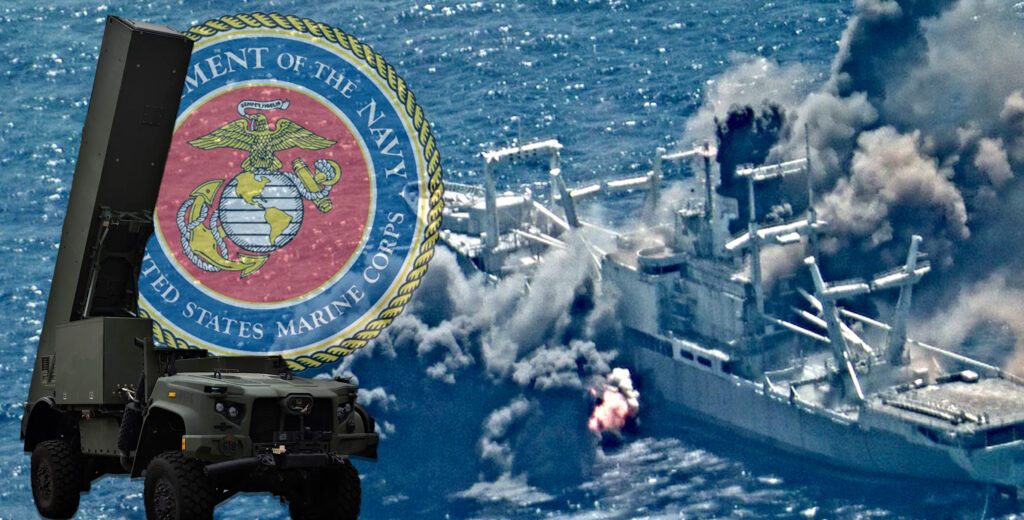
After two decades of asymmetric ground-based warfare, the United States Marine Corps continues to transition toward becoming a more modern naval expeditionary force with its latest weapons platform, the Long Range Fires Launcher (LRFL). The platform emerged last week, but despite the novel capabilities it will provide, the truth is, the LRFL is a collection of technologies that are already in service elsewhere. However, LRFL will leverage these technologies to new ends — and it all centers around the venerable Tomahawk cruise missile.
Tomahawks are a common facet of America’s unique brand of kinetic diplomacy , with U.S. leaders using the weapon for a variety of reasons due to its long range, high success rate, and extreme precision to engage targets. In fact, the Tomahawk is often the very first weapon used by American leaders whether on its own in a limited strike, or as the opening volley of a much larger combat operation.
But for the most part, Tomahawk launches have long been carried out by Navy ships equipped with vertical launch tubes. Now, Uncle Sam’s favorite gun club will be able to leverage the very same weapon system from a new, unmanned, ground-based launcher to dramatically increase the force’s ability to engage targets at longer ranges… including enemy ships at sea.
Related: Just how big is China’s Navy? Bigger than you think
The Long Range Fires Launcher (LRFL)
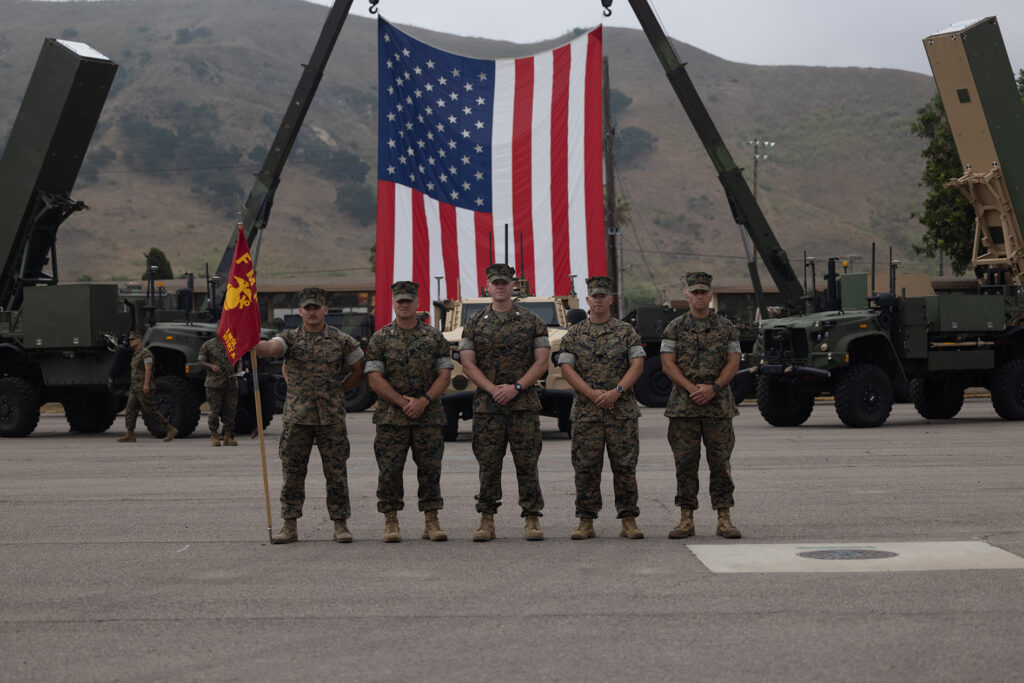
The LRFL is an uncrewed tactical vehicle that carries a single Tomahawk cruise missile, allowing Marines to engage targets at ranges of hundreds of miles or more. Importantly, the platform itself is designed to support rapid deployment in austere environments, allowing Marines to quickly take islands and begin wreaking havoc on any enemy vessels or positions within reach.
The basis for the Corps’ new Long Range Fires Launcher (LRFL) is the Remotely Operated Ground Unit for Expeditionary-Fires (ROGUE-Fires) vehicle, which itself is an unmanned iteration of the Oshkosh Defense’s Joint Light Tactical Vehicle (JLTV) .
The JLTV program was a joint venture between the U.S. Army, U.S. Marine Corps, and U.S. Special Operations Command to field a suitable (but partial) replacement for the venerable HMMWV, more commonly known as the Humvee. With tens of thousands of these platforms built in at least four iterations, the JLTV has proven to be a broadly capable vehicle that the Navy and Marine Corps have continued to find novel uses for since it initially entered service in 2019.
The same ROGUE-Fires vehicle also serves as the basis for the Navy Marine Expeditionary Ship Interdiction System (NMESIS) launcher vehicle which provides a similar value but is built to carry two Naval Strike Missiles (NSMs), rather than one Tomahawk. The NSM is a nimble and stealthy anti-ship weapon designed to skim just about the sea surface with a high power-to-weight ratio to allow for dramatic maneuvering. It can deliver a 500-pound high explosive payload to targets as far away as 200 miles.
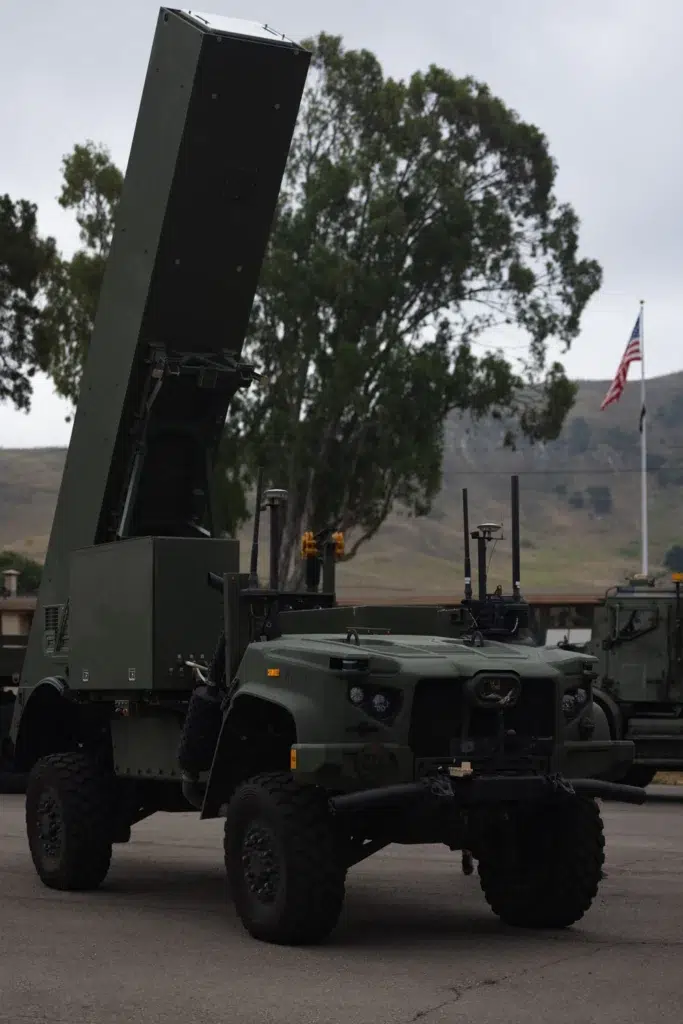
The Marine’s new LFRL, on the other hand, can deploy any iteration of the long-serving BGM-109 Tomahawk cruise missile — some of which can reach targets further out than 1,200 miles — while carrying a 1,000-pound warhead. In fact, the most modern Block III and forward Tomahawks blur the line between cruise missiles and suicide drones as they can even loiter over a battlespace for hours under power while receiving updated target data in real-time via a two-way data link.
Further, the most modern Block IV Tomahawk missiles can do a great deal more than simply strike targets: Thanks to a new electro-optical sensor , a second missile can now fly over previous targets to relay imagery back to a command element for battle damage assessments, making this broadly capable missile into a limited reconnaissance and intelligence gathering tool as well.
Related: Could cheap Tomahawk missiles be better than hypersonic ones?
Block V Tomahawks will give Marines even more capability

The latest and greatest Tomahawk cruise missiles, known as Block V, will offer Marines even more capability and flexibility in leveraging these unique weapons as an expeditionary force. With the ability to hit surface ships at ranges of more than 1,000 miles, the LRFL gives the Marine Corps the ability to quickly establish an area-denial bubble around any occupied position, including captured islands.
The Block V Tomahawk is a subsonic weapon, which may seem slow in this era of hypersonic hype , but the truth is, flying low and slow offers some significant benefits.
“The benefit of the sub-sonic missile is range,” Bryan Clark, a retired submarine officer and senior fellow at The Hudson Institute, told Defense News. “Being sub-sonic means it’s also able to travel at a more fuel-efficient speed. So, the fact that the Tomahawk can travel more than 1,000 miles is a function of the sub-sonic speed. To get that kind of range out of a super-sonic missile you’d need something much larger.”
Those low speeds don’t make for an easy weapon to jam or intercept either. The missile is designed to skim just above the water surface as it closes with its target, flying below the view of most ship-borne air defense radars. It’s also been hardened against jamming and other forms of electronic warfare, with the ability to rely on other forms of navigation even in GPS-jammed environments. Its onboard systems even allow it to rapidly course-correct while closing with moving targets like an enemy ship sailing at full speed.
Read more from Sandboxx News
- The CIA used miniature models to meticulously plan high-stakes operations
- The Smatchet was a beastly weapon for WWII commandos designed by the legendary William Fairbairn
- Ukrainian forces are using a clever and cheap method to take out Russia’s best tanks
- What is the legendary Black Triangle UFO?
- X-Planes: Experimental aircraft that changed the world without you knowing
Related Posts
Us army successfully tests dark eagle hypersonic missile, a brief history of futuristic advanced grenade launchers, the marines’ drone-killing machine preps for ultimate gear test, new cold war heats up: us to deploy missiles and hypersonic weapons to germany, inside the recovery of mia americans from a secret jungle base, everything you need to know about america’s struggle to replace its aging icbm arsenal.

America’s NGAD fighter isn’t dead, but it is changing
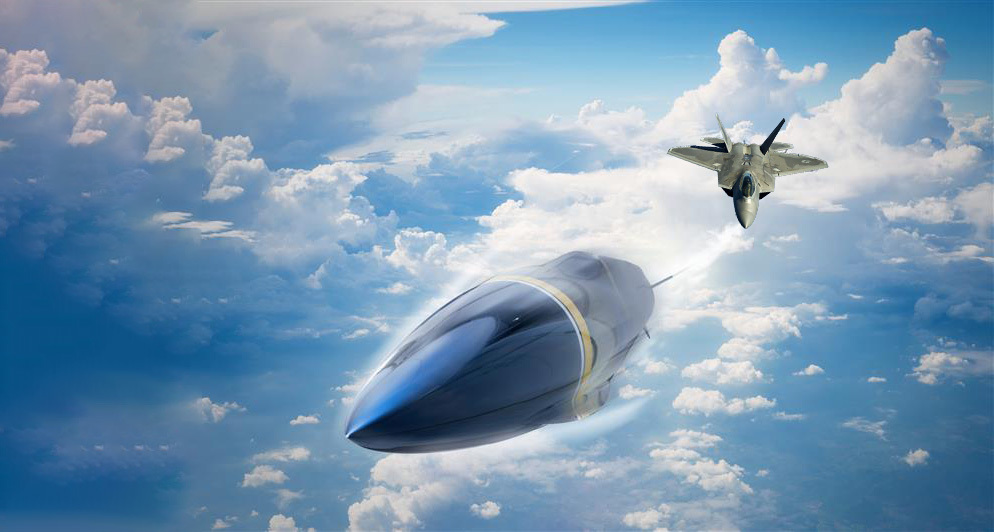
Lockheed Martin’s new hypersonic missile can fit inside the F-22

F-16s carrying the A-10’s 30mm cannon actually saw combat
Putin warns the US of Cold War-style missile crisis
- Medium Text

- Russia warns United States over missiles in Germany
- Putin says Russia will deploy if plans are implemented
- Putin: United States risks Cold War-style crisis
- U.S. plans to deploy longer range missiles in Germany
Sign up here.
Writing by Guy Faulconbridge; editing by David Evans
Our Standards: The Thomson Reuters Trust Principles. , opens new tab

Thomson Reuters
As Moscow bureau chief, Guy runs coverage of Russia and the Commonwealth of Independent States. Before Moscow, Guy ran Brexit coverage as London bureau chief (2012-2022). On the night of Brexit, his team delivered one of Reuters historic wins - reporting news of Brexit first to the world and the financial markets. Guy graduated from the London School of Economics and started his career as an intern at Bloomberg. He has spent over 14 years covering the former Soviet Union. He speaks fluent Russian.

Zelenskiy acknowledges Ukraine's military operation in Russia
Moscow's forces are in their sixth day of intense battles against Kyiv's largest incursion into Russian territory since Russia launched a full-scale invasion of Ukraine.
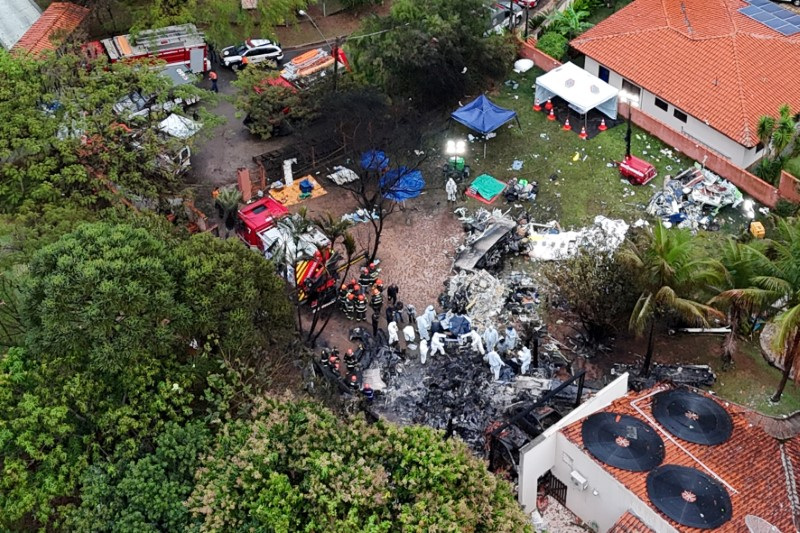
- svg]:fill-accent-900 [&>svg]:stroke-accent-900">
Here’s why the Marine Corps is getting Tomahawk cruise missiles
By James Clark
Posted on Feb 12, 2020 7:10 PM EST
4 minute read
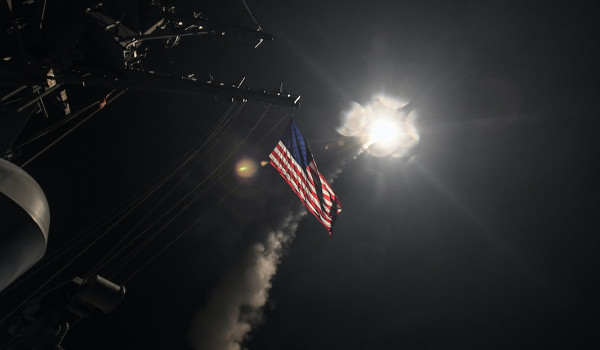
The Navy and Marine Corps intend to purchase an additional 203 Tactical Tomahawk Cruise Missiles for roughly $402 million in 2021, according to the Navy’s budget request for that fiscal year, with 155 of the long-range munitions going to the Navy and 48 going to the Marine Corps.
The Navy’s decision to get more Tomahawks isn’t all that shocking — after all, the missiles made national news as recently as 2017 after President Donald Trump approved launching dozens at targets in Syria .
However, the fact that the Corps wants to get their hands on the cruise missile is surprising.
“The Marine Corps is procuring the Tomahawk missile as part of an overall strategy to build a more lethal Fleet Marine Force,” said Capt Christopher Harrison, a Marine Corps spokesman, who also confirmed to Task & Purpose that the Marine Corps’ intent to procure Tomahawks is “a new development.”
“This capability is in support of the Marine Corps Expeditionary Advanced Base Operations (EABO) and the National Defense Strategy (NDS) approach to build a more lethal Joint Force,” Harrison said. “Further details on the capability and or employment are classified.”
Beyond the obligatory invocation of “lethality” — twice in as many sentences — the official response doesn’t quite get to why this matters, what it means, or why it’s happening now.
Fortunately, it’s not rocket science. Since the late 1980s the United States had adhered to the the rules of the Intermediate-Range Nuclear Forces Treaty , a set of guidelines signed by President Ronald Reagan and Russia’s Mikhail Gorbachev in 1987 that limited the types of weapon systems the nations involved could use.
One of those rules involved barring the use of long-range ground-launched missiles, like Tomahawks, which under the INF could not be fielded from land. When the U.S. withdrew from the INF treaty in August, that restriction went out the door. With the Marine Corps getting their hands on Tomahawks of their own, that means there are more places from which they can be launched.
“There’s not a lot of detail included here, but taking ashore strike assets like the Tomahawk and making them mobile would seem to fit squarely with the vision of Commandant [David] Berger’s new planning guidance, which is to say distributed fires coming from both land and sea that complicate an adversary’s surveillance and targeting job,” explained Tom Karako, the director of the Center for Strategic and International Studies’ Missile Defense Project.
“That the U.S. Marines are getting Tomahawk speaks volumes about the no-kidding seriousness with which service operational concepts are approaching great power competition,” Karako told Task & Purpose.
The move is in line with the Commandant of the Marine Corps Gen. David Berger’s long term plans for the service, especially his plans for dealing with other militaries who have massive arsenals of their own.
“I am absolutely embracing Distributed Maritime Operations as a naval concept,” Berger said in October. “We must distribute the force for two reasons: one is because, in a peer-to-peer fight, what you do not want to do is drive down into the heart of their collection of weapon systems in a narrow funnel; you want to distribute your force so that you pose an adversary a dilemma from multiple axes in multiple domains. The byproduct of dispersing, of distributing, is you also become more survivable, more difficult to detect.”
The basic idea: If you can fire off these bad boys from multiple locations — at land and sea — then they’re that much harder to stop, and if your enemy has to worry about threats from every corner, they might miss one.
To date, some 2,300 Tomahawks have been used in combat operations, according to Raytheon, the weapon’s manufacturer.
Latest in Marine Corps
Marine osprey crewman died trying to reach pilots on doomed plane marine osprey crewman died trying to reach pilots on doomed plane.
By Nicholas Slayton
A guide to all the parachutes that American paratroopers ‘ride to work’ A guide to all the parachutes that American paratroopers ‘ride to work’
By Joshua Skovlund
Sign Up For Our Newsletters
The latest military news and entertainment delivered right to your inbox.
By signing up you agree to our Terms of Service and Privacy Policy .
How Tomahawk cruise missiles may send messages to (and from) Syria
The Tomahawk cruise missiles being readied for possible use against Syrian government targets date back to the Cold War, but the new generation of the low-flying weapons has capabilities that Ronald Reagan’s generals could only imagine.
The most advanced Tomahawks fly at 550 mph, have GPS, onboard digital maps, video cameras, two-way satellite links and a navigation system that allows them to loiter over an area and wait for their targets to pop up. That's in addition to the 1,000-pound bomb each Tomahawk typically carries.
The U.S. Navy can use those capabilities to send a message to Syria's leaders about their chemical weapons program, just as it sent messages in the past to leaders of Iraq , Yugoslavia , Afghanistan, Sudan , Yemen and Libya . Almost as important, the Tomahawks can send messages back — in the form of real-time battle damage assessments.
As in those earlier conflicts, Tomahawk cruise missiles are America's point of the spear for the Syria crisis. President Barack Obama and his aides, members of Congress, leaders of other countries and U.N. officials are continuing to debate if and when to attack Syria. Meanwhile, Pentagon leaders have their battle plan ready, and the Tomahawks are expected to deal the first blow.
High-flying airplanes and remote-controlled drones could conceivably come into play as well. But the low-flying, fast-moving Tomahawks are more suited to the task, due to their ability to evade the Syrian military's radar systems and air defenses.
Commanders on guided-missile destroyers and submarines in the Mediterranean could launch the missiles soon after a presidential order. The attack would likely begin at night — not only for purposes of stealth but to minimize civilian casualties. Damascus would have just a few seconds of advance warning.
"These things, you can hear them coming, even at night," Jeffrey White , defense fellow at the Washington Institute for Near East Policy, told NBC News. "They're not going to be screaming in like rockets, but you hear them just trundling along."
From nukes to cluster bombs
Sea-launched Tomahawk land-attack missiles, or TLAMs, are designed to fly at low altitude and strike high-value or heavily defended land targets. The first Tomahawk missiles entered service in 1984 and had their first operational use during the 1991 Persian Gulf War. About 2,000 Tomahawks have been fired in combat to date. Other types of cruise missiles were built to be fired from airplanes or from the ground.
The Tomahawks are made by Raytheon Missile Systems Co., based in Tucson, Ariz. Cost estimates range from $607,000 to $1.4 million or more, depending on how you account for research, development, testing and support — and inflation. That oft-quoted $607,000 figure is from fiscal year 1999.
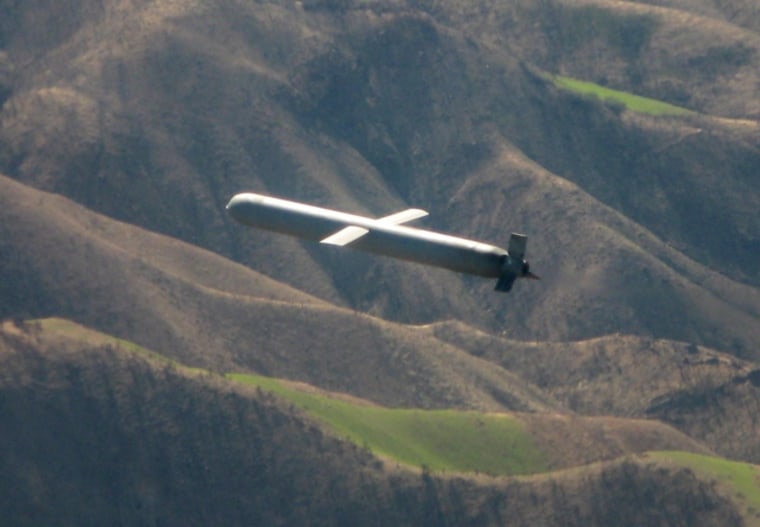
Infographic: All about cruise missiles
Tomahawks are 20.3 feet long and 21 inches in diameter, and weigh 3,300 pounds each. They're equipped with a rocket engine for launch and a turbofan engine for cruising. They look like huge metal sausages when they blast off from their launch tubes — but once they're up in the air, they sprout 3.5-foot-long wings for flight control.
The first missiles were built to carry nuclear warheads. They could fly as far as 1,500 miles — far enough to hit Moscow from a sub in the North Sea. The nuclear-tipped Tomahawks were recently retired , though. Today's Tomahawks either carry a 1,000-pound conventional warhead or a package of 166 cluster bombs. The standard range is 1,000 miles.
The 1,000-pound bomb is powerful enough to destroy a house or blast a crater roughly 20 feet wide, as shown in this Raytheon video . The cluster bombs, also known as bomblets, spray out and have "kind of a firecracker effect," White said. Those firecrackers can be lethal to combatants — or civilians, as illustrated by the controversy over a 2009 missile attack in Yemen .
The U.S. Navy is said to have a stockpile of 3,500 Tomahawks in all. Britain has had U.S.-made Tomahawks in its arsenal since 2008.
Can they really fly through a window?
The latest generation of Tomahawk missiles relies on gyroscopes as well as GPS, radar readings, digital maps and scene-matching software to stay on course. An onboard camera can show remote operators what the Tomahawks are seeing. Data and imagery are transmitted via a two-way satellite communication system. Once the information gets to the satellites, it can be sent to the commanders back on the ships — or to the Pentagon and the White House.
The Tomahawks' targeting is often said to be so precise they can fly through a specific window in a building, but White said that feature may have been oversold. "The accuracy is about 5 meters," he told NBC News. "You're not going to hit a specific window or a specific tank, but you're going to hit a specific building."
The missiles can be reprogrammed while they're in flight to go after any of 15 pre-selected alternate targets, or head for new coordinates sent to the Tomahawks via satellite.
What will the missiles hit?
Each of the four U.S. Navy guided-missile destroyers in the Mediterranean is carrying dozens of Tomahawk missiles. Still more Tomahawks are aboard two U.S. submarines and one British sub in the vicinity. The targets are expected to include military units and command-and-control facilities that were involved in mounting the reported chemical attacks — but not the suspected factories or depots that hold chemical weapons.
White said the target list and the extent of the missile attack depends of the message that Obama and his advisers want to send. "If it's just to demonstrate that we do have a red line (on the use of chemical weapons), the attack won't be too big," he said.
But anytime the Tomahawks are brought out, it's a big deal. "These Tomahawks are non-trivial weapons," White said. "For attacking structures, for using bomblets to attack personnel and vehicles in the open, these are very effective weapons."
More about the Syria crisis:
- U.S. military options in Syria: A briefing
- What happens after a strike on Syria? It depends
- NBC News archive on the Syria crisis
For more about Tomahawk technology, check out this National Geographic TV documentary .
Alan Boyle is NBCNews.com's science editor. Connect with the Cosmic Log community by "liking" the NBC News Science Facebook page , following @b0yle on Twitter and adding the Cosmic Log page to your Google+ presence. To keep up with NBCNews.com's stories about science and space, sign up for the Tech & Science newsletter , delivered to your email in-box every weekday. You can also check out "The Case for Pluto," my book about the controversial dwarf planet and the search for new worlds.
- svg]:fill-accent-900 [&>svg]:stroke-accent-900">
Marines Set To Be The First To Bring Back Land-Based Tomahawk Missiles Post-INF Treaty
By Joseph Trevithick
Posted on Mar 5, 2020 9:19 PM EST
7 minute read

The U.S. Marine Corps is on track to be the first branch of the U.S. military to re-introduce a ground-launched version of the Tomahawk cruise missile following the collapse of the Intermediate-Range Nuclear Forces Treaty, or INF , with Russia last year. Though this weapon is most often associated with strikes against targets on land , the Marines plan to primarily employ them as land-based anti-ship weapons.
U.S. Marine Corps Commandant General David Berger offered details on his service’s anti-ship missile plans while testifying before Congress on Mar. 5, 2020. The Pentagon’s budget proposal for the upcoming 2021 Fiscal Year revealed that the service had requested $125 million to purchase 48 Tomahawks , but details about the exact purpose of the acquisition were kept classified initially, according to official budget documents and a report from Task and Purpose .
“Part of the homework that the Navy and Marine Corps done over the past six months is how we think we are going to need to operate in the future as an integrated naval force and that means the Marine Corps assumes a role that we have not had in the past 20 years which is how do we contribute to sea control and sea denial,” Berger told lawmakers . “The Tomahawk missile is one of the tools that is going to allow us to do that.”
“It could be the answer, it could be the first step towards a longer-term answer five, six, seven years from now, but what we need is long-range precision fires for a small unit, a series of units that can from ship or from shore hold adversaries’ naval force at risk,” he added. In recent years, there has been a significant revival of interest within the Marine Corps, as well as the U.S. Army, in ground-based anti-ship capabilities, especially for use in a distributed warfare environment , such as a major conflict across the wide expanses of the Pacific region.

There are still no details on the exact variant of the Tomahawk that the Marine Corps is looking to buy or what kind of launcher they’re expecting to use to fire it. Commandant Berger’s statement that the specific goal of acquiring the missiles is to be able to “hold adversaries’ naval force at risk” strongly points to the weapons being the Maritime Strike Tomahawk (MST).
This is a subvariant of the new Block V Tactical Tomahawk, or TACTOM, also known as the Block Va . In addition to the general performance and capability improvements found on the Block V missiles, the MST has a new multi-mode targeting system , which includes an imaging infrared sensor, radiofrequency homing, and GPS-assisted guidance, allowing it to navigate to a target area hundreds of miles away and hit moving maritime targets. The missile will also have a two-way data link allowing for course correction and other targeting updates during flight.
General Dynamics first developed surface ship and submarine-launched anti-ship Tomahawks variants, known as the RGM-109B and UGM-109B , respectively, which used active radar homing seekers, in the 1980s. The U.S. Navy withdrew these missiles from service in 1994 and eventually converted them into Block IV Tomahawk Land Attack Missile (TLAM) variants.
Years later, Raytheon, which is the present manufacturer of the Tomahawk series, under contract to the Navy, revived the concept of a Tomahawk that could hit moving targets at sea, which subsequently led to the MST program. “Now, this is potentially game-changing capability for not a lot of cost. It’s a 1,000-mile anti-ship cruise missile. It can be used from practically our entire surface and submarine fleet,” then-Deputy Defense Secretary Bob Work had said of the concept in 2015.
In January, Shephard reported that the Navy’s plans to reach initial operational capability with these missiles on its ships this year had been delayed. It’s not clear if that could impact the Marine Corps timeline for fielding its land-based systems in any way.
The Marines will also have to develop a ground-based launcher to employ the missiles. In August 2019, the Pentagon did demonstrate a ground-launched Tomahawk using a launch cell from a Mk 41 Vertical Launch System mounted on a trailer. However, this was clearly a very experimental system for research and development purposes rather than an operational weapon system.
That test occurred very soon after the Intermediate-Range Nuclear Forces Treaty, or INF, came to an end. The INF had prohibited the United States and Russia from developing ground-based cruise or ballistic missiles with ranges between 310 and 3,420 miles. Before that treaty, which the U.S. government originally signed with the Soviet Union, came into force in 1988, the U.S. Air Force had operated a ground-launched nuclear-tipped land attack version of the Tomahawk known as the BGM-109G Gryphon , which had its own four-round tractor-trailer-mounted launcher.
One possibility for the Marines could be adapting its M142 High Mobility Artillery Rocket System ( HIMARS ) launchers in some way to fire MST missiles. However, the two weapons that HIMARS is presently capable of firing, 227mm artillery rockets and Army Tactical Missile System (ATACMS) quasi-ballistic missiles, are both substantially shorter than Tomahawk.
Separately in his testimony before Congress, Commandant Berger said that the Marines planned to integrate a ground-launched version of the smaller, shorter-range Naval Strike Missile (NSM) anti-ship cruise missile onto a derivative of HIMARS called the Remotely Operated Ground Unit Expeditionary-Fires (ROGUE-F). The present concept for ROGUE-F consists of a HIMARS launcher mounted on an unmanned chassis derived from the 4×4 Joint Light Tactical Vehicle (JLTV) tactical truck.
Semi-hidden in back of Oshkosh Defense booth at Modern Day Marine is first ever concept art of JLTV ROGUE Fires, emerging USMC tech study to place HIMARS on JLTV @ShephardNews pic.twitter.com/XrmSewA45o — Scott Gourley (@ScottGourley1) September 26, 2018
The U.S. Navy adopted the NSM in 2018 for its Littoral Combat Ships and also plans to integrate it into a future class of guided-missile frigates, known presently as FFG(X) .
Berger’s comments about Marines being able to employ anti-ship Tomahawks “from ship or from shore” does imply that whatever launcher the service might pick, it would want one that it could lash the deck of various classes of amphibious warfare ships or other vessels and then employ from that position. The Marine Corps has already demonstrated its ability to use HIMARS in this fashion.
“A ground-based anti-ship missile capability will provide anti-ship fires from land as part of an integrated naval anti-surface warfare campaign,” Commandant Berger also said in this testimony. “This forward-deployed and survivable capability will enhance the lethality of our naval forces and will help to deny our adversaries the use of key maritime terrain.”
It’s also worth noting that while the MST variant of the Tomahawk is primarily intended for the anti-ship role, the Navy has already said that it will have a secondary land-attack capability. NSM has also demonstrated its ability to strike land targets , in addition to ships.

While the Marines may be first to field a ground-launched anti-ship Tomahawk, they may not be the only service to acquire them, either. The U.S. Army is also increasingly interested in land-based anti-ship capabilities and has already expressed an interest in acquiring its own ground-launched NSMs .
No matter what, the return of the ground-launched Tomahawk in the U.S. military, at least in the anti-ship role, is very much on the horizon now.
Contact the author: [email protected]
Latest in R/UGM-109 Tomahawk
770 weapons expended by eisenhower carrier strike group on historic red sea deployment 770 weapons expended by eisenhower carrier strike group on historic red sea deployment.
We have a tally of how many Standard Missiles, Tomahawks, and air-to-air and air-to-ground weapons Ike's strike group launched at Houthi targets.
Australia Won’t Arm Collins Class Submarines With Tomahawks Australia Won’t Arm Collins Class Submarines With Tomahawks
The decision, announced today, means Australia’s undersea force won’t have a long-range strike weapon for at least a decade.
SIGN UP FOR OUR NEWSLETTERS
Sign up to receive our newsletter every week.
By signing up you agree to our Terms of Service and Privacy Policy.

Russia So Freaked: Navy Surfaced a Rare Seawolf-Class Submarine as a Warning
Summary and Top Line Points: The U.S. Navy's Seawolf-class submarines, developed at the end of the Cold War to outmatch Soviet capabilities, remain among the most advanced undersea warfare vessels. With only three constructed, these subs are equipped with cutting-edge technology, including Mark 48 torpedoes, Harpoon anti-ship missiles, and Tomahawk cruise missiles. The class includes the USS Seawolf, USS Connecticut, and USS Jimmy Carter, with the latter modified for special operations.
-In recent years, the Navy has publicly surfaced these stealthy subs, particularly in the Arctic, to deter Russian aggression.
As tensions continue in Ukraine, the U.S. may use similar displays to reinforce NATO's deterrence strategy.
Why the Seawolf-Class Has to Surface Sometimes
Designed at the tail end of the Cold War, the U.S. Navy’s Seawolf-class submarines were built to surpass the capabilities of their Soviet counterparts.
While budgetary constraints and the collapse of the USSR led to the cancellation of the full planned fleet of vessels, the three Seawolf ships constructed continue to wow naval experts and scare U.S. adversaries. In fact, the Navy’s Seawolf ships carry some of the most sophisticated undersea warfare technology ever developed.
Although submarines usually remain silent and stealthy, in order to demonstrate their ability to strike from any corner of the world, the Navy has intentionally surfaced them as a show of force to adversaries.
In 2020, the service made public displays of its nuclear submarines in Norway in an effort to deter Russian hostility in the region. On Aug. 21, 2020, USS Seawolf parked off the coast of Tromso to take on new crew members. The U.S. and Norway use this strategic port off the coast of Tromso to keep an eye on Moscow’s Northern Fleet. According to senior naval officials , “the U.S. and Norway have a great relationship, and our ability to use facilities in and around Tromso would provide a strategic location for our visits,” adding that “It would give us flexibility for not only the U.S. but allied countries to exercise in the High North.”
Introducing the Seawolf-Class
USS Seawolf, like its two sister ships, was developed in the late Cold War. The Navy required a new sub class capable of countering the USSR’s Typhoon class of ballistic missile submarines. Engineers designed the Seawolf ships to be quieter and faster than their predecessors. The lead ship of the class, USS Seawolf , was ordered in 1989 from the Electric Boat Division of General Dynamics. USS Connecticut was commissioned a decade later, followed by USS Jimmy Carter in 2004.
In 2021, Connecticut was severely damaged after colliding with a seamount while sailing in the South China Sea. Fortunately, no sailors were killed in the incident, but the submarine has remained out of commission since this mishap. The Navy expects to return Connecticut to service in 2025.
USS Jimmy Carter was developed with distinct modifications, making the submarine essentially a new class when compared to its two sister ships. The Navy uniquely designed Jimmy Carter for covert surveillance and special operations missions.
According to Business Insider , Jimmy Carter included “special thrusters fore and aft that allow the sub to remain stationary underwater, as well as a 100-ft hull extension known as the Multi-Mission Platform, which increased its length to 435 feet and its fully submerged displacement 12,158 tons.” Jimmy Carter can float above undersea communications cables and physically cut into them, which enables the submarine to intercept the data streams running through them.
Basic Specs and Capabilities for the Seawolf-Class
The Navy’s Seawolf-class ships are typically armed with 533mm Mark 48 torpedoes, in addition to Harpoon anti-ship missiles and Tomahawk cruise missiles. A Tercom-Aided Inertial Navigation System guides each missile toward its intended target. While the Tomahawk can be fitted with a nuclear warhead, these submarines rarely carry these types of munitions.
As detailed by Naval Technology, “Block III improvements include an improved propulsion system and Navstar global positioning system (GPS) guidance capability. The anti-ship Tomahawk missile is equipped with inertial guidance and an active radar and anti-radiation homing head. The range is up to 450km.”
Could the Navy Surface Its Seawolf-Class Submarines in the Future?
As Russia’s invasion of Ukraine rages on, the U.S. and its NATO allies are constantly working to deter additional hostilities in the region. Showcasing the strength and capability of the U.S. submarine fleet via surprise surfacing missions could remind the Kremlin of the consequences of extending the war further.
About the Author: Maya Carlin, Defense Expert
Maya Carlin , National Security Writer with The National Interest, is an analyst with the Center for Security Policy and a former Anna Sobol Levy Fellow at IDC Herzliya in Israel. She has by-lines in many publications, including The National Interest, Jerusalem Post, and Times of Israel. You can follow her on Twitter: @MayaCarlin .
All images are Creative Commons.


Joe Biden Is Probably About to Send These Deep-Strike Missiles to Ukraine
The long-range weapons could be used to equip Ukraine's HIMARS rocket launchers.
Publicly, though, White House officials have maintained that an ATACMS transfer is “ on the table ,” but not yet decided, and said they would not announce a transfer of these weapons during Ukraine President Volodymyr Zelensky's visit to New York and Washington this week as Kyiv had urged.
For over a year, Ukraine and its supporters have lobbied for access to this deep strike weapon, compatible with the M142 HIMARS rocket artillery truck and older, heavier tracked M270 MLRS vehicles already donated to Ukraine. Zelensky says that he has discussed supply of ATACMS with Biden on multiple occasions. And while one faction of congressional Republicans staunchly opposes aid to Ukraine, four Republican senators from an opposing faction wrote a letter to Biden urging him to finally donate ATACMS.
Biden’s reluctance to donate the Army Tactical Missile System stems from two concerns. The first is that ATACMS’s chief advantage—its strike range of 190 miles—might enable Ukraine to mount provocative attacks deeper into Russian soil using an American-supplied weapon. As for many other weapons supplied to Ukraine without consequence, propagandists in Russia have (very dubiously) threatened grandiose consequences should ATACMS be donated, such as attacks on bases in Poland and Germany.
However, concerns that Ukraine might employ ATACMS problematically have likely been significantly allayed by the U.K. and France’s delivery of Storm Shadow/SCALP-EG cruise missiles earlier this year, which exceed ATACMS in range. Ukraine has extensively employed these missile, but not on targets on Russian soil (which have instead been struck by indigenous Ukrainian weapons).
The other concern was the limited number of ATACMS missiles produced— just over 4,000 , of which around 500 were used in combat and the majority of initial production retired. That means ATACMS donated to Ukraine could dent the U.S. Army’s and Marine Corp’s current stockpile.
CNN claims that Lockheed Martin is building/modernizing 500 new ATACMS missiles per year , likely mostly devoted to fulfilling foreign export orders (see below) with 900 already sold abroad by mid-2023 to Bahrain, Greece, Qatar, South Korea, Poland, Romania, Turkey and UAE. Budget documents suggest M57 missile cost $1.7 million in 2021 dollars, while M57E1s rebuilt from retired M39 missiles cost $1.3 million.
A rediscovered stockpile ( if it exists in some form) may ease quantity concerns, and likely consists of retired M39-series missiles designed to release hundreds of cluster bomblets. These M39s could be transferred directly to Ukraine , or the U.S. could donate some of its newer, non-cluster warhead M57 missiles while converting rediscovered M39s into M57E1s to backfill the U.S. military’s inventory.

A wheeled HIMARS rocket launcher ordinarily carries a single, pre-loaded pod laden with six 227-millimeter artillery rockets effective out to over 43 miles. The older, beefier tracked M270 MLRS carries two such pods (12 missiles total). But those pods can be swapped one-for-one with ATACMS pods carrying one big 610-millimeter diameter guided missile that can fly 186 miles.
That allows such artillery units to double as quasi-ballistic missile launchers capable of ‘deep fires’ against targets far beyond the frontline, including high-level command posts, airbases, and fuel and ammunition stores, as well as enemy artillery, air defenses, and opposing tactical missiles.
Presently, Ukraine has received or been pledged at least 38 M142 HIMARS trucks, as well as at 18 M270A1s or B1s donated by France, Italy and the United Kingdom that can employ ATACMS missiles. There are also five German M270 MARS systems compatible only with the oldest M39 missiles. The fact that Ukraine already owns these launch vehicles and has experience using them would significantly eases challenges in integrating another type of long-range weapon.
None of these vehicles has been visually confirmed lost in combat, despite Russia’s frequent claims to have destroyed more HIMARS systems than were ever delivered to Ukraine.
How ATACMS works
ATACMS is the U.S. Army’s in-house deep strike weapon for when air strikes are deterred by air defenses or bad weather, or are simply not available fast enough.
Exactly when the Army should use these expensive missiles in place of airstrikes remains much studied and debated . In fact, in two wars in Iraq, the Army has most often targeted ATACMS strikes on air defenses to pave a clear path for friendly airpower, a mission known as JSEAD (Joint Suppression of Enemy Air Defenses.) As air defenses grow more potent, ground-launched strikes targeting them will likely grow in importance in the 21st century.
This weapon began development in 1980 to replace the dual nuclear/conventional MGM-52 Lance ballistic missiles assigned to Corps-level artillery brigades. Improved guidance and cluster munitions were believed to make resorting to a nuke unnecessary. The Air Force also originally planned for an air-launched variant, while the Navy mulled a submarine-launched version for Los Angeles -class subs in the 1990s, but both services ultimately passed.
On launch, an ATACMS missile accelerates to over three times the speed of sound and performs a series of maneuvers—including steep climbs and drops, making it difficult to shoot down. It can optionally be launched “off axis” (at reduction to maximum range) to obfuscate the position of the launchers, protecting them from counterbattery fire.
The original M39 missile was guided to target using a then-advanced inertial guidance system. In its terminal phase, it spins and sprays a large target area with 950 M74 cluster bomblets effective against both personnel and material targets. This huge spread was deemed capable of dealing “57% destruction” even when bursting 150 meters away from the intended target, and could inflict lesser damage up to 450 meters away. Unlike improved dual-purpose cluster munitions , however, M74s weren’t designed to penetrate armored vehicles or hardened structures.
The subsequent M39A1—compatible only with improved M270A1 launchers and M142s—carried just 300 bomblets but introduced GPS guidance to greatly increase accuracy, meaning a similar number of bomblets still actually hit the intended target.
There were plans for Block II M39A3 missiles each carrying 13 Brilliant Anti-Tank (BAT) bomblets designed to individually home in on moving armored vehicles within 2.5 miles of release using acoustic and infrared sensors—meaning that one missile could theoretically wipeout an entire Soviet tank company. An improved Block IIA model with radar-guided BAT bomblets was also planned., but post-Cold War, the mass armor assault threat was deemed over. As a result, BAT was canceled in 2002 after 75 M39A3s were built and $2.2 billion was spent developing it.
By then, cluster weapons had grown controversial due to the tendency of dud bomblets to dangerously contaminate large areas. M74 bomblets reportedly fail to detonate 2% of the time, implying an M39 missile leaves behind an average of 19 bomblets in need of disposal.
While Washington refused to sign on to a cluster weapon ban, it no longer wanted to use them routinely. So, in the 2010s, M39 missiles were replaced by M48 and M57 missiles using regular ‘unitary’ 507-lb. WDU-18/B warheads taken from Harpoon anti-ship missiles. The M57’s enhanced GPS guidance improved average accuracy to 9 meters, making area saturation unnecessary. Furthermore, many old M39 and M39A1 rockets were refitted with new warheads, engines and guidance systems under the designation M57E1.

In 2023, the Army will begin receiving deliveries of the succeeding Precision Strike Missile (PrSM), extending strike range to over 310 miles (perhaps eventually up to around 500 or 620 miles) now that the INF treaty’s restrictions on land-based missile weapons are defunct . Two PrSMs will fit each in rocket pod, doubling max capacity compared to ATACMS. Furthermore, later Increment 2 PrSMs will have multi-mode seekers allowing home-in on moving targets, making it an effective anti-ship weapon. Initial low rate of production of 110 PrSM missiles annually is underway, with full-scale production to begin 2025, with deliveries to Australia and likely the UK foreseen.
In an interview with The Drive , an Army official allowed that imminent PrSM deliveries made donations of ATACMS "...might make it less risky from a [operational] readiness standpoint..." for the U.S. military.
But the PrSM isn’t in service yet, and ATACMS remains in demand—both with the Army and Marine Corps, and with foreign clients. Future M57 missile buyers include Australia (10), Estonia (18), Lithuania (18), Morrocco (40), and—likely—Taiwan (up to 64.) Poland, which is currently ordering a whopping 486 HIMARS launchers , requested 48 more ATACMS in 2023 too.
Slayer of SAMS: ATACMS in combat

According to a West Point thesis paper , 32 ATACMS were launched in 24 fire missions by the U.S. Army’s VII Corps in the missile’s combat debut in the 1991 Gulf War. The first mission was conducted on short notice by an MLRS battery in a convoy to quickly destroy an Iraqi SA-2 surface-to-air missile site.
In total, ATACMS strikes outright destroyed six Iraqi air defense systems and silenced several more, clearing corridors through which Coalition warplanes could fly un-assailed. Other strikes targeted Iraqi refueling sites, multiple rocket artillery systems, and Frog-7 tactical missile trucks.
E-8 JSTARS surveillance and battle management aircraft often acquired, or verified, ground targets subsequently struck by ATACMS. Furthermore, an A-10 pilot called in an urgent ATACMS strike that struck a bridge while an Iraqi convoy was crossing, allegedly destroying 200 soft-skin vehicles.
In the U.S.’s 2003 invasion of Iraq, another 414 M39, M39A1, and M48 ATACMS were used, by which time average strike deconfliction/planning time decreased from 1-2 hours to seven minutes. 13 M48s joined in the opening bombardment of Baghdad on March 20 of that year with Tomahawk cruise missiles. Strikes by 64 M39 missiles were credited with crippling air defense, artillery, and command units of Iraq’s 11 th Infantry Division, rendering it combat ineffective in 24 hours.
The 1 st Marine Expeditionary Force and the 101 st Air Mobile division both made extensive use of ATACMS (90 and 114 launched respectively)—the latter in advance of Apache helicopter sorties near Karbala, including 29 prior to an ill-fated massed Apache attack on Iraq’s Medina division.
Most notably, ATACMS’s ability to deliver 50 precision strikes during a blinding sandstorm which mostly grounded air support for two days was praised for enabling a sustained advance on Baghdad.
A further 42 M48 and 35 M57 missiles were reportedly used in combat in Afghanistan.
How would ATACMS impact the war in Ukraine?
When Ukraine began using shorter-range GPS-guided GMLRS rockets in the summer of 2022, they caused massive destruction to Russia’s forward deployed logistical bases, ammo and fuel depots, and command posts—fatally hobbling Russia’s summer offensive and clearing the way for successful Ukrainian counterstrikes in Kharkiv and Kherson province that fall.
But from this painful learning experience, Russia adjusted its logistical and command post deployments to reduce vulnerability to HIMARS—most obviously by pushing depots and command posts back out of strike range, even if that came at a cost to logistical efficiency. Another effective measure was deploying GPS jamming near key facilities to degrade accuracy of GMLRS rockets. Finally, Russia better fortified such targets and allocated more air defense assets to protecting them.
ATACMS obviously brings many more rear-area Russian depots, HQs, and bases within striking range—including Russian airbases in Crimea and bridges spanning the Kerch Strait (ie. Russia to Crimea), as well as those connecting Crimea to the Ukrainian mainland. However, they may also be susceptible to degraded accuracy from GPS jamming.
It’s worth noting that Storm Shadow/SCALP missiles have already been used for long-range strikes this summer. They have achieved good results, but not the massive impact HIMARS did in 2022 due to Russia’s above-described countermeasures.
Still, ATACMS differ in important respects from Storm Shadow. As a ground-launched weapon, it isn’t tethered to Ukraine’s Su-24M bomber fleet, making it less vulnerable to preemptive attacks. (The home base of Ukraine’s Su-24 base has been repeatedly hammered by Russian missile strikes, though without much apparent success .)
Because ATACMS is many times faster than Storm Shadow, it can be used against more time sensitive mobile targets, such as artillery and air defense systems, ships at port, or aircraft refueling on the ground.
The missile may also compel Russia to commit additional types of air defense systems to protect rear area targets—especially S-300V4 batteries uniquely capable of mobile ballistic missile defense—further thinning out air defense assets to the benefit of Ukrainian frontline aviation.
But most importantly, ATACMS will give Ukraine more long-distance arrows for its quiver. As Ukraine’s donated Storm Shadows and SCALP inventory inevitably depletes this year, ATACMs could arrive in time to pick up the slack and allow Ukraine to sustain long-distance precision strikes in the post-counteroffensive timeframe.
Allies of Ukraine that could theoretically donate additional ATACMs missiles include Romania and Poland, while Egypt, South Korea, and Turkey might be amenable to selling theirs to Ukraine or to backfilling U.S. donations.
Another munition arriving this fall—the Ground Launched Small Diameter Bomb (GL-SDB), also launchable from M270 and M142 vehicles—may be even more important for Ukraine. Though it has a lower speed and range (93 miles), it may cost one-tenth the price ($170,000) per shot.
Sébastien Roblin has written on the technical, historical, and political aspects of international security and conflict for publications including 19FortyFive, The National Interest, MSNBC, Forbes.com, Inside Unmanned Systems and War is Boring. He holds a Master’s degree from Georgetown University and served with the Peace Corps in China. You can follow his articles on Twitter .

.css-cuqpxl:before{padding-right:0.3125rem;content:'//';display:inline;} Weapons .css-xtujxj:before{padding-left:0.3125rem;content:'//';display:inline;}

Israel’s New $1 Billion Laser Will Be Unstoppable

Could the Pentagon Adapt Weapons to New Missions?
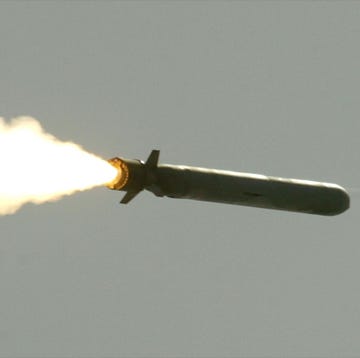
Army Sending Hypersonic Missiles to Face Russia

The U.S. May Buy Israeli Missiles for Ukraine
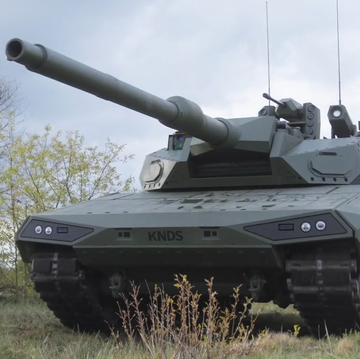
Tanks With Multiple Cannons Are Having a Moment
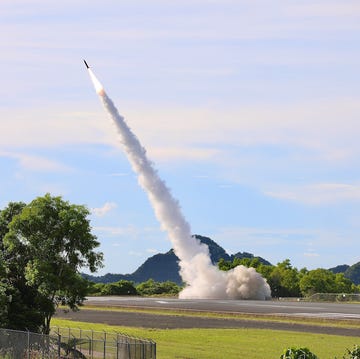
The Army is Back to Shooting at Enemy Warships

The World’s Most Powerful Tank is European
America’s Cruisers are Sailing into the Sunset

How Russia Copied America’s Deadliest Missile

The Air Force’s Upcoming “Doomsday Plane” Replacem

Meet the Marines' New Kamikaze Drone

IMAGES
COMMENTS
The U.S. Marine Corps has finally given us a look at the uncrewed 4×4 launch vehicle at the core of its new ground-based Tomahawk cruise missile unit.Dubbed the Long Range Fires Launcher, it is similar, but not identical to the Joint Light Tactical Vehicle-based design that the service is also fielding as a launch platform for Naval Strike Missile anti-ship missiles.
The Marine Corps stood up its first-ever Tomahawk cruise missile battery at Camp Pendleton, Calif., last week. Alpha Battery, which falls under the 11th Marine Regiment, is the first of three Long ...
The U.S. Army and U.S. Marine Corps (USMC) are moving closer to fielding Land-based Tomahawk cruise missiles launched from tractor-trailers. The U.S. Navy awarded a $217 million contract on May 24, 2022 for 154 Tomahawk Block V cruise missiles with 70 missiles going to the U.S. Navy, 54 going to the USMC, and 30 to the Army.
Our First Look At Marines' Tomahawk Missile Launching Drone Truck Firing. The U.S. Marine Corps offered a glimpse of its new 4x4 Tomahawk launch vehicle firing one of these cruise missiles at the ...
DOD. The U.S. Marine Corps has formally activated its first unit that will be equipped with ground-launched Tomahawk cruise missiles. The Marines are currently in the process of determining exactly how this unit will be equipped and employed, but the service expects to have a fully operational Tomahawk-armed battalion before the end of the decade.
Naval News reached out to the U.S. Marine Corps (USMC) Systems Command for more details and information on their Long-Range Missile Battery, essentially one Tomahawk cruise missile in a canister mounted on an unmanned ROGUE-Fires JLTV 4x4 tactical truck. Peter Ong 14 Aug 2023. In order to provide land-based long-range anti-ship missile (LBASM ...
Tomahawk (missile family) The BGM-109 Tomahawk ( / ˈtɒməhɔːk /) Land Attack Missile ( TLAM) is a long-range, all-weather, jet-powered, subsonic cruise missile that is primarily used by the United States Navy and Royal Navy in ship and submarine-based land-attack operations. Developed at the Applied Physics Laboratory of Johns Hopkins ...
Oshkosh Defense. The United States Navy has officially activated its first-ever land-based Tomahawk cruise missile-armed unit. Designated Battery A, 11th Marine Regiment, 1st Marine Division, the ...
Army Successfully Fires Tomahawk Missiles from MRC System. Aug. 23, 2023. (Source: US Army; issued Aug 22, 2023) The US Army has announced it successfully demonstrated the launch of a Tomahawk missile from the prototype Mid-Range Capability truck-mounted launcher (pictured) on June 27, 2023, but has not released any photographs of the event.
RCCTO Successfully Demonstrates Launch from Mid-Range Capability System. The US Army's Mid-Range Capability, also known as Triton, consists of a mobile vertical launcher for Tomahawk cruise missiles fitted to a semi-trailer truck. (US Army photo) HUNTSVILLE, AL. --- On June 27, 2023, the Army's Rapid Capabilities and Critical Technologies ...
Separately, the Marine Corps is also looking to field larger, longer-range missiles than NSM, such as the Tomahawk cruise missile, using ground-based launchers. Semi-hidden in back of Oshkosh Defense booth at Modern Day Marine is first ever concept art of JLTV ROGUE Fires, emerging USMC tech study to place HIMARS on JLTV @ShephardNews pic ...
Tomahawk is relatively affordable at about $1.4 million each, or perhaps $2.5 million for the anti-ship variant. The current model of SM-6 is nearly $5 million, and the hypersonic, extended-range ...
Despite being powered by rockets and a jet engine, the Tomahawk missile itself isn't that fast, at least comparatively. It reportedly travels at a speed of around 550 miles per hour. An F-16 ...
Typhon was designed to strike targets beyond the range of the Army's Precision Strike Missile, but shorter than the Long Range Hypersonic Weapon system using modified SM-6 and Tomahawk missiles. [4] The Army originally planned for the first SMRF battery to be fielded in Q4 FY2023, with three additional batteries to follow in the subsequent year ...
In July, the U.S. Marine Corps activated its first-ever Tomahawk cruise missile battery. While Tomahawks are primarily used by the Navy, this land-based configuration, launched from 4×4 trucks, offers several advantages over its ship-based counterparts.These advantages include striking moving targets at a range of 1,000 miles and higher effectiveness at a lower cost.
A Tomahawk Block III missile launches from the guided missile cruiser USS San Jacinto, 2003. The missile uses a solid rocket fuel motor, shown here, to launch from the warship. Once it reaches the ...
Washington and Berlin said in a joint statement this month that the U.S. weapons to be placed in Germany would ultimately include SM-6 missiles, Tomahawk cruise missiles, and "developmental hypersonic weapons", including those with a significantly longer range than the ones currently deployed across Europe.
A BGM-109 Tomahawk flying in November 2002. A cruise missile is an unmanned self-propelled guided vehicle that sustains flight through aerodynamic lift for most of its flight path and whose primary mission is to place an ordnance or special payload on a target. [1] Cruise missiles are designed to deliver a large warhead over long distances with high precision.
The Marine's new LFRL, on the other hand, can deploy any iteration of the long-serving BGM-109 Tomahawk cruise missile — some of which can reach targets further out than 1,200 miles — while carrying a 1,000-pound warhead. In fact, the most modern Block III and forward Tomahawks blur the line between cruise missiles and suicide drones as ...
After two decades of asymmetric ground-based warfare, the United States Marine Corps continues to transition toward becoming a more modern naval expeditionar...
The United States said on July 10 that it would start deploying long-range missiles, opens new tab in Germany from 2026 in preparation for a longer-term deployment that will include SM-6, Tomahawk ...
The Navy and Marine Corps intend to purchase an additional 203 Tactical Tomahawk Cruise Missiles for roughly $402 million in 2021, according to the Navy's budget request for that fiscal year ...
The Tomahawk cruise missiles being readied for possible use against Syrian government targets date back to the Cold War, but the new generation of the low-flying weapons has capabilities that ...
Russia may riposte by adapting its own equivalent of the Tomahawk. The Kalibr cruise missile comes in a short-range Club-K land-based export missile designed for launch from a shipping container ...
Washington and Berlin announced earlier this month that the U.S. will deploy the arms in Germany starting in 2026, along with Tomahawk cruise missiles and developmental hypersonic weapons. The missiles "have significantly longer range than current land-based fires in Europe," the White House said in a statement.
The proposed weapons include Tomahawk cruise missiles, the Standard Missile (SM)-6, and developmental hypersonic weapons. It will be the first time since the 1990s that the U.S. will deploy long ...
The stepped-up cooperation includes - let the drums roll - Tomahawk cruise and SM-6 missiles. Given China's recent advances in hypersonic weapons, it's almost certain that their US ...
The U.S. Marine Corps is on track to be the first branch of the U.S. military to re-introduce a ground-launched version of the Tomahawk cruise missile following the collapse of the Intermediate-Range Nuclear Forces Treaty, or INF, with Russia last year. Though this weapon is most often associated with strikes against targets on land, the Marines plan to primarily employ them as land-based anti ...
The Navy's Seawolf-class ships are typically armed with 533mm Mark 48 torpedoes, in addition to Harpoon anti-ship missiles and Tomahawk cruise missiles. A Tercom-Aided Inertial Navigation System ...
In the U.S.'s 2003 invasion of Iraq, another 414 M39, M39A1, and M48 ATACMS were used, by which time average strike deconfliction/planning time decreased from 1-2 hours to seven minutes. 13 M48s ...